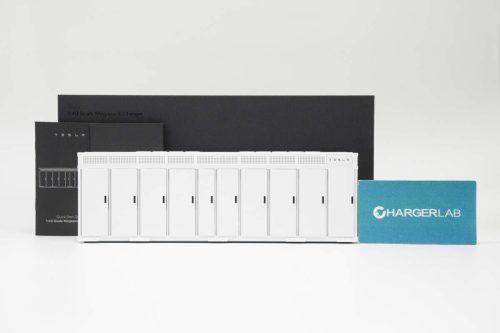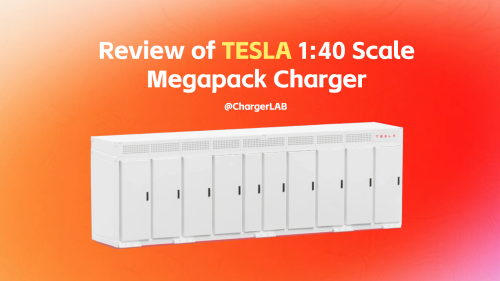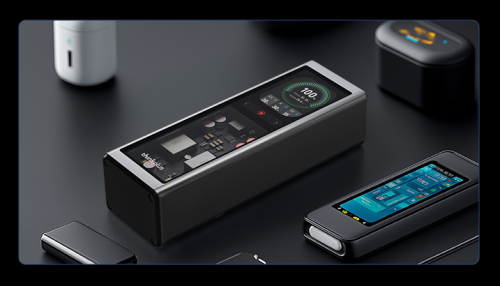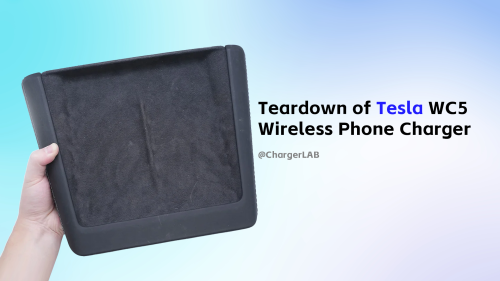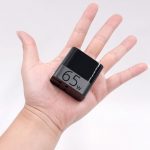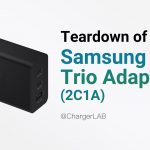Desktop charger is a neat choice if you want to simplify your desk setup for multi-device charging. We have teared down the very powerful yet very hard-to-find Anker PowerPort Atom PD 4 100W desktop charger, and now we have another brand new desktop charger in our lab, the ZMI zPower Trio 65W 2C1A Desktop Charger. Here's our teardown review.
I Design
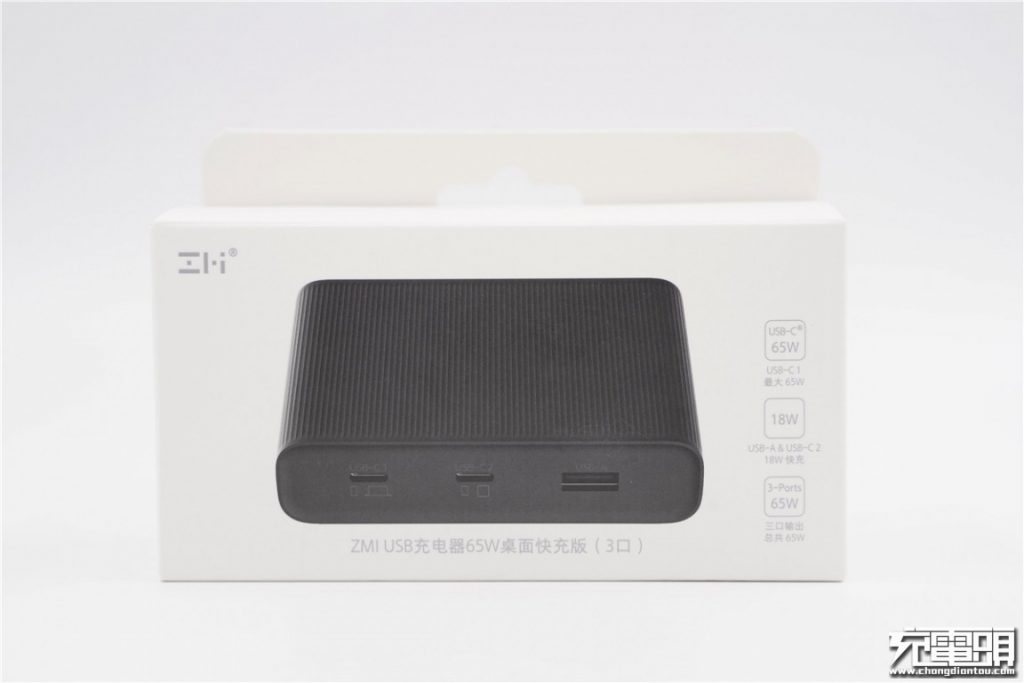
It comes with ZMI's minimalistic white box. Features: USB-C1 65W max,USB-A & USB-C2 18W split, 65W in total.
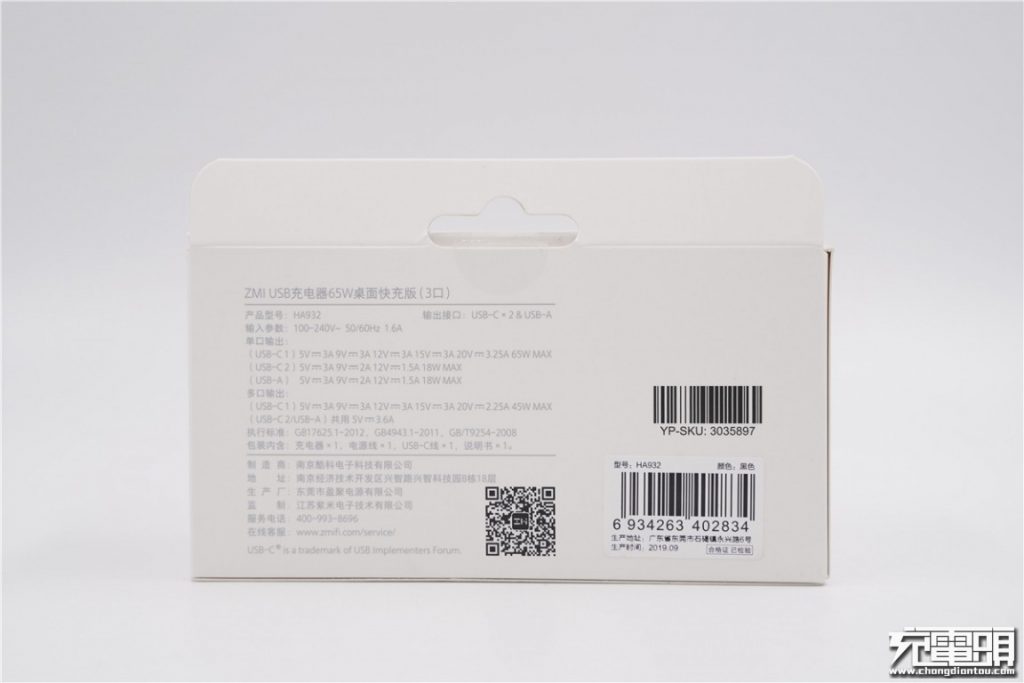
Specifications on the back.
Model: HA932
Ports: 2× USB-C & 1× USB-A
Input: 100-240V~ 50/60Hz 1.6A
Output (Select One Port to Use, Leave Other Two Ports Unplugged):
USB-C (Left): PD 5V𝌂3A 9V𝌂3A 12V𝌂3A 15V=3A 20V𝌂3.25A 65W max
USB-C (Middle): PD 5V𝌂3A 9V𝌂2A 12V𝌂1.5A 18W max
USB-A: QC 5V𝌂3A 9V𝌂2A 12V𝌂1.5A 18W max
Output (Multi-Port in Use): USB-C (Left): PD 5V𝌂3A 9V𝌂3A 12V𝌂3A 15V𝌂3A 20V𝌂2.25A 45W max (independent of the other two ports)
USB-C (Middle) with USB-A unplugged: PD 5V𝌂3A 9V𝌂2A 12V𝌂1.5A 18W max
USB-A with USB-C (Middle) unplugged: QC 5V𝌂3A 9V𝌂2A 12V𝌂1.5A 18W max
USB-C (Middle) & USB-A Both in Use: 5V𝌂3.6A 18W max
Dimensions (Main Body): 3.74 × 2.62 × 0.91 in (95 × 66.5 × 23 mm)
AC Lead Cord Length: 5 ft
Weight (Main Body): 5.50 oz (156 g)
Weight (Main Body plus AC Power Cord): 9.98 oz (283 g)
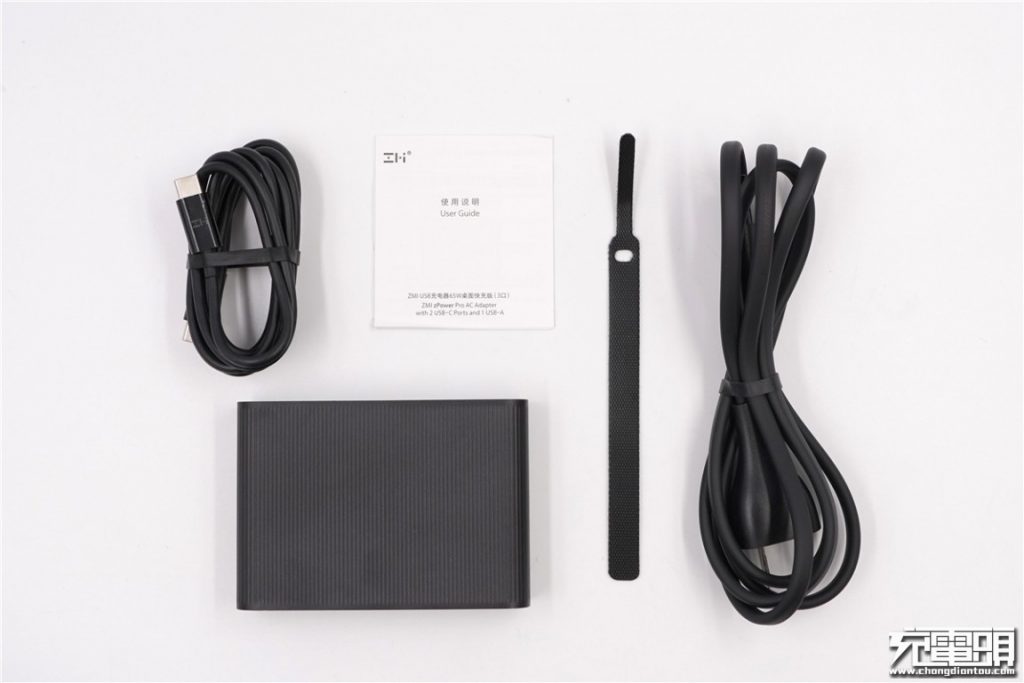
Package contents: charger, USB-C to USB-C cable, figure-8 power cord, Velcro cable tie, and user manual.
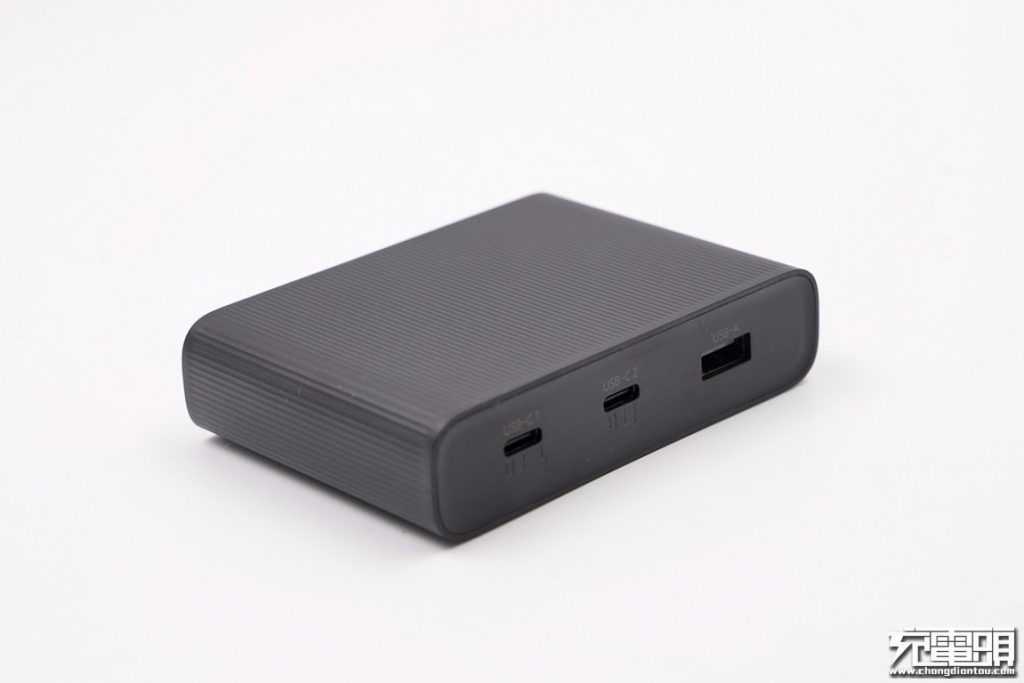
The desk charger is made of flame retardant PC material with a groove finishing, which gives it a straightforward and industrial look.
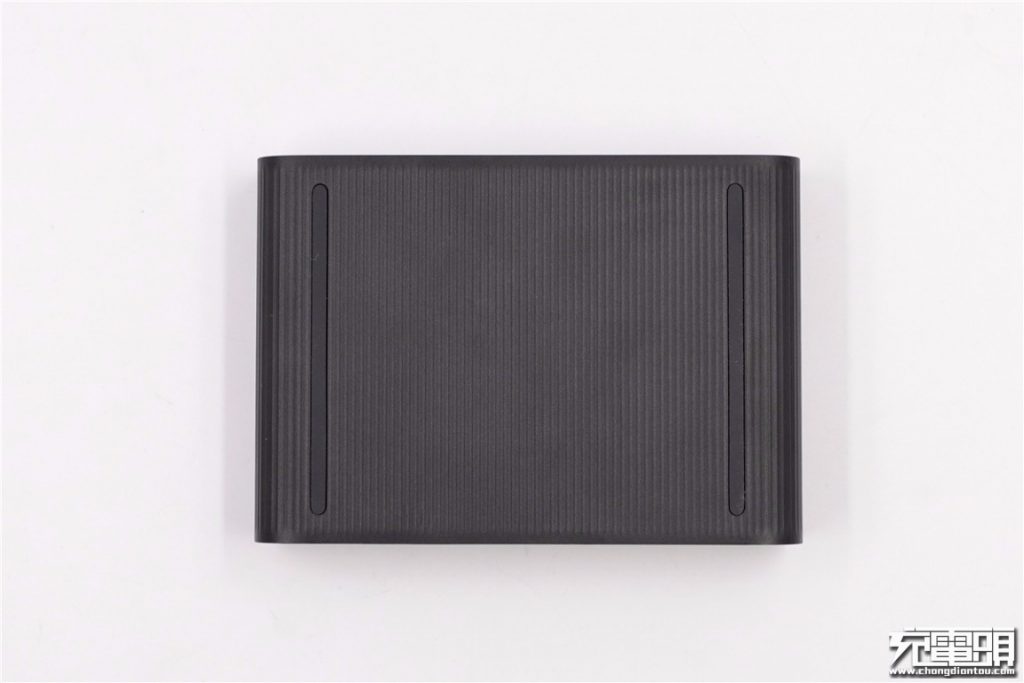
Non-slip rubber strips on the bottom.
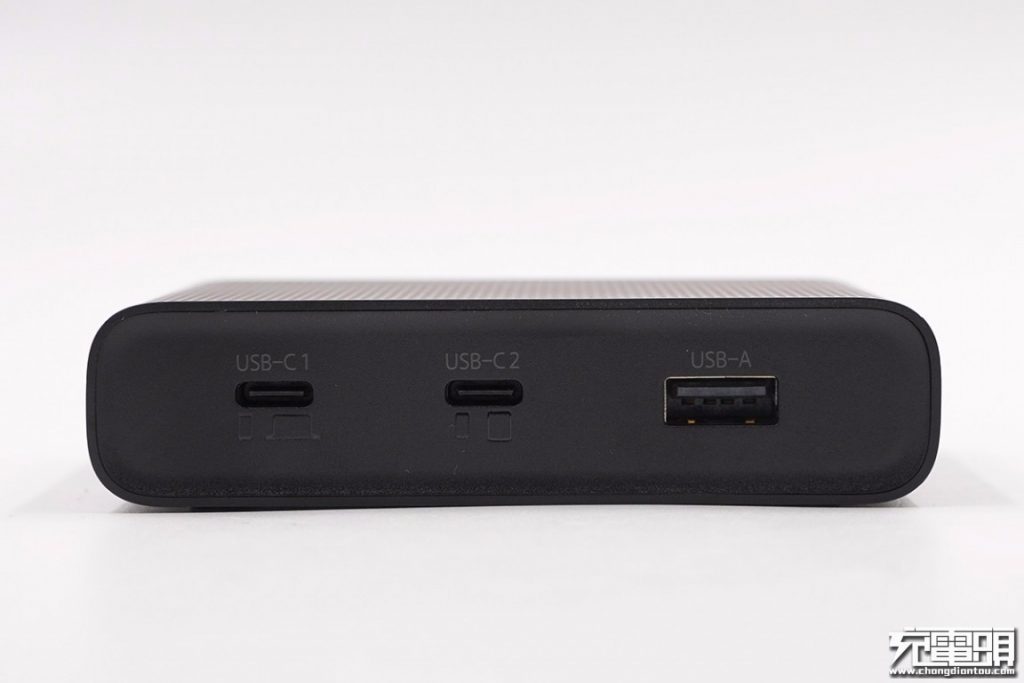
The front of the charger, from left to right: USB-C1, USB-C2, and USB-A. Two of the USB-C ports have small icons down below, suggesting suitable devices for charging.
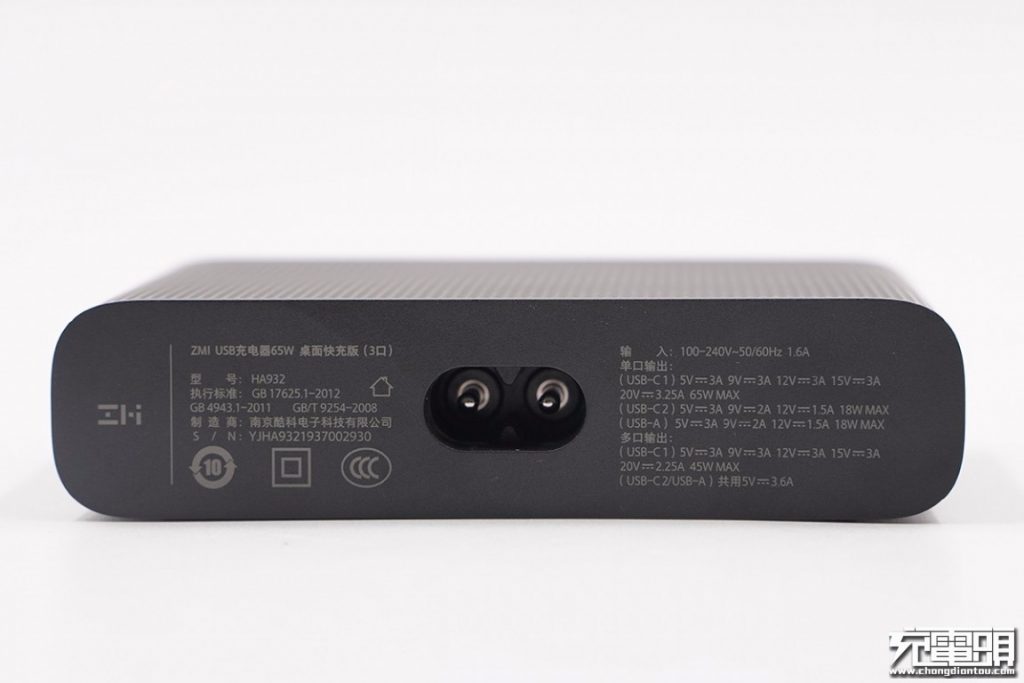
A figure-8 power input port and specifications on the back.
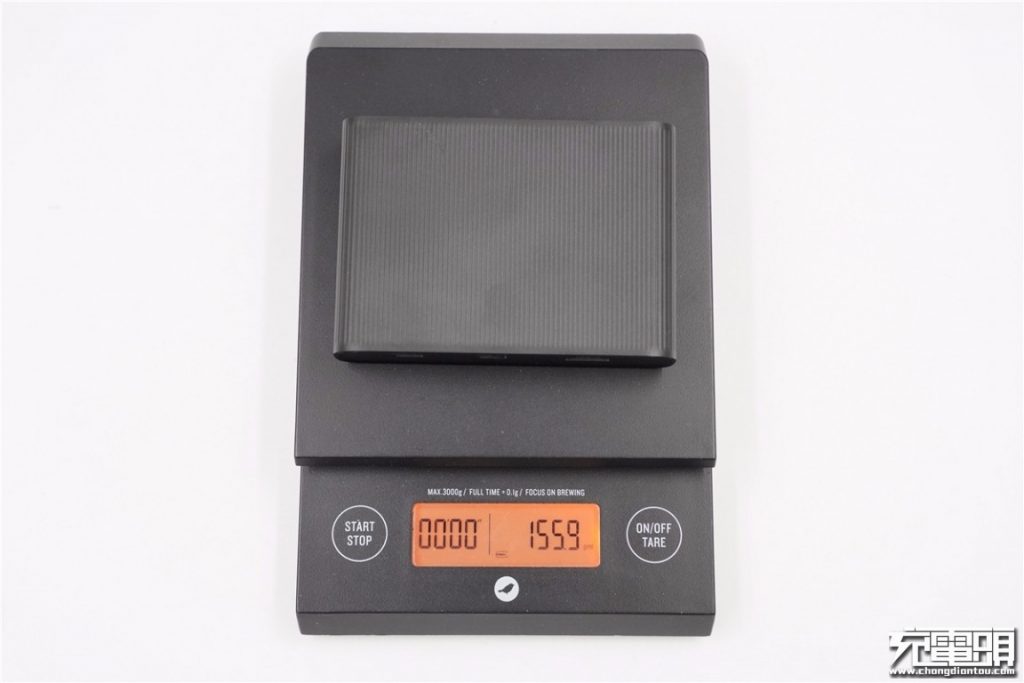
It weights 156g/5.50oz.
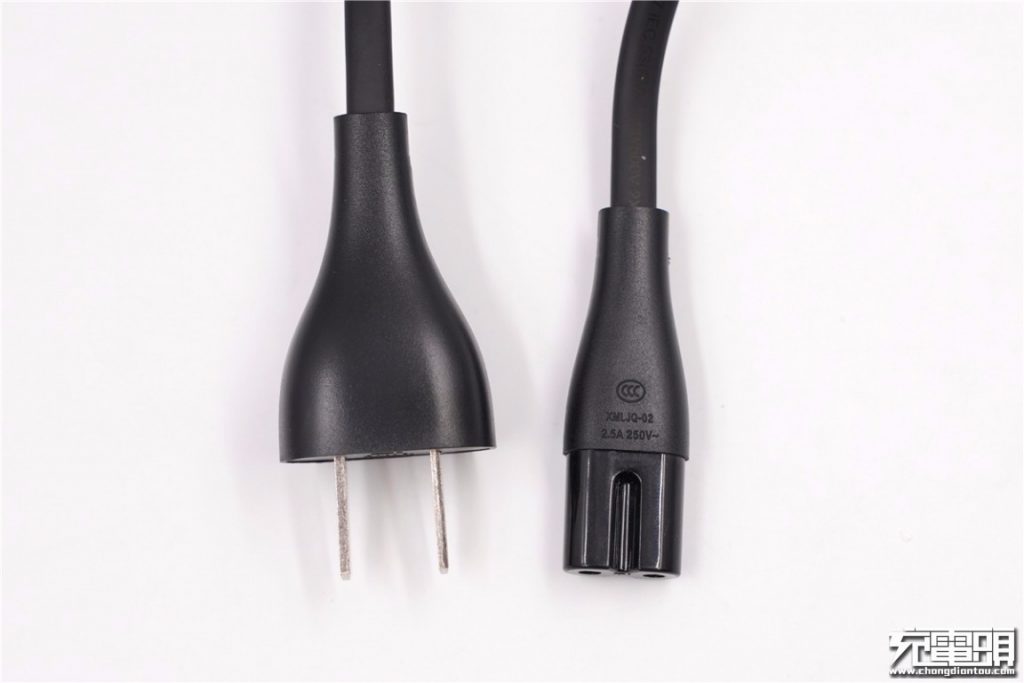
2.5A 250V markings on the figure-8 power cord.
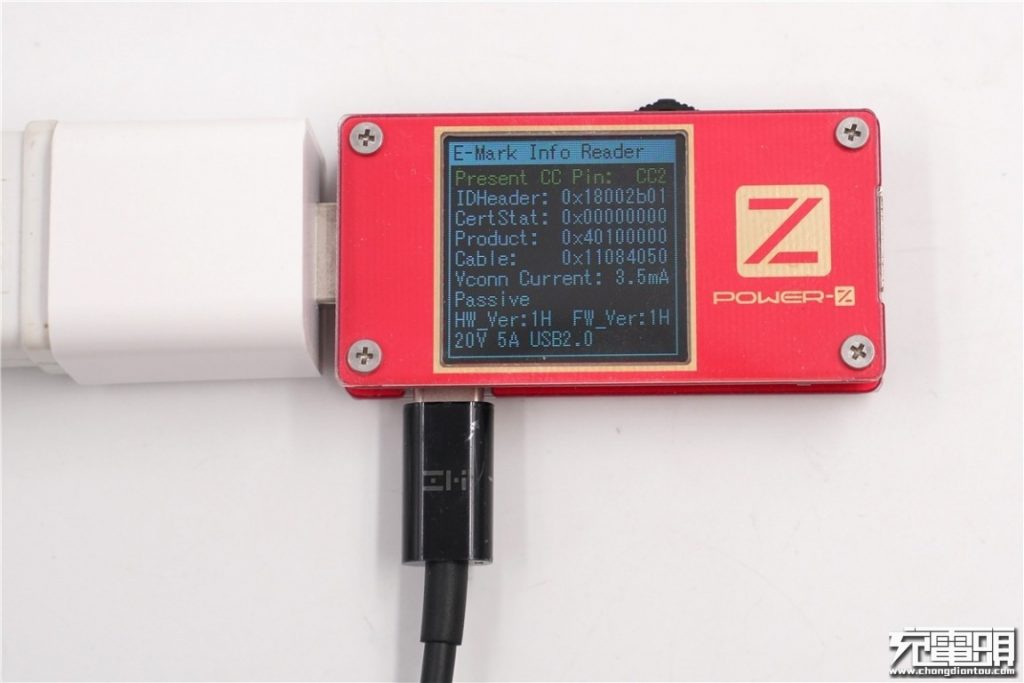
The included USB-C to USB-C cable is E-Marked which supports 20V/5A, 100W max, and USB2.0 data transfer speed.
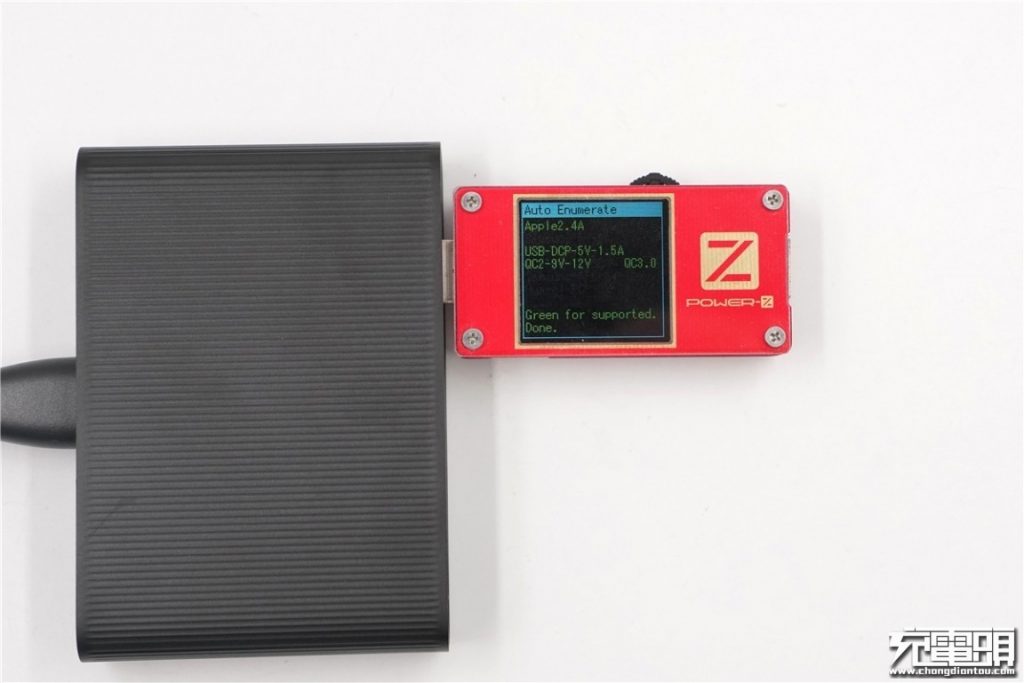
With ChargerLAB Power-Z KT001 USB Power Monitor, we know that its USB-A port supports Apple 2.4A, DCP, QC 2.0, and QC 3.0 charging protocols.
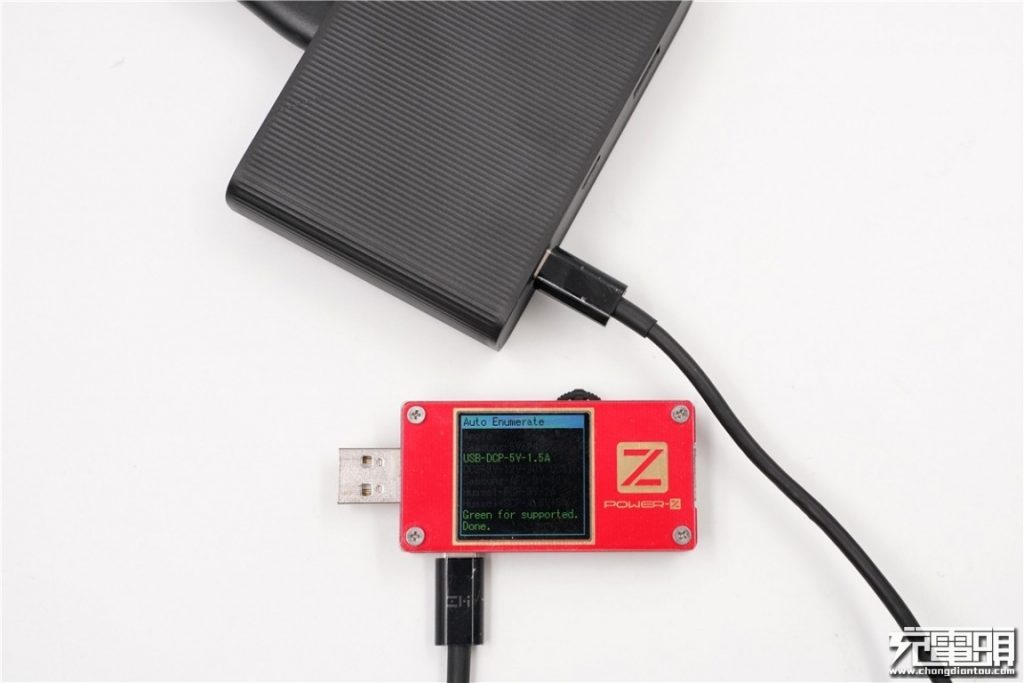
USB-C1 supports DCP protocol.
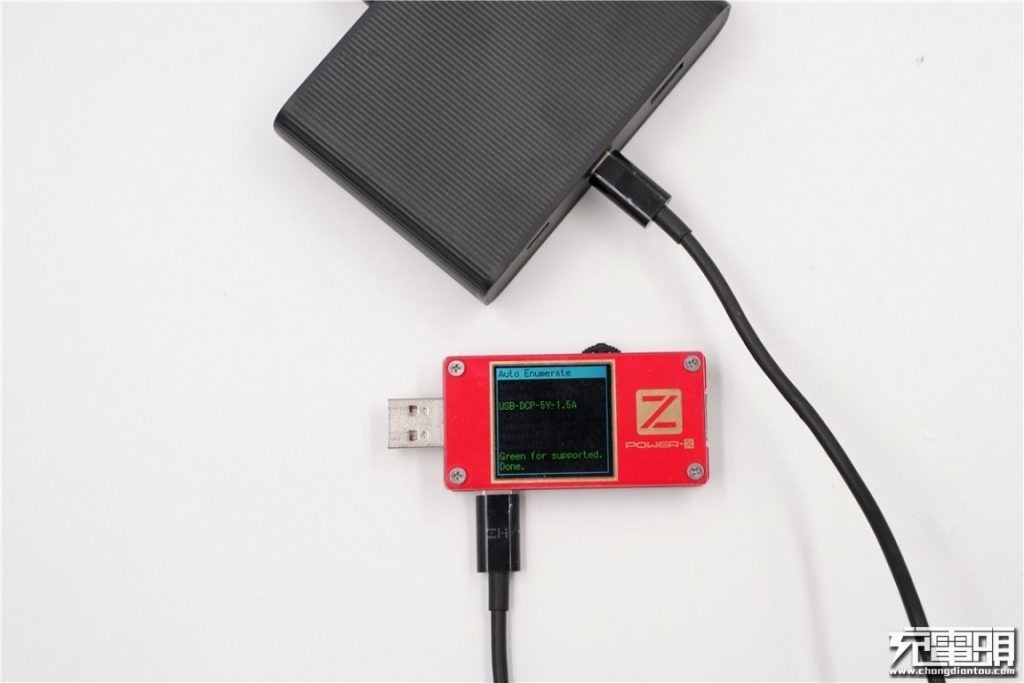
USB-C2 supports DCP protocol.
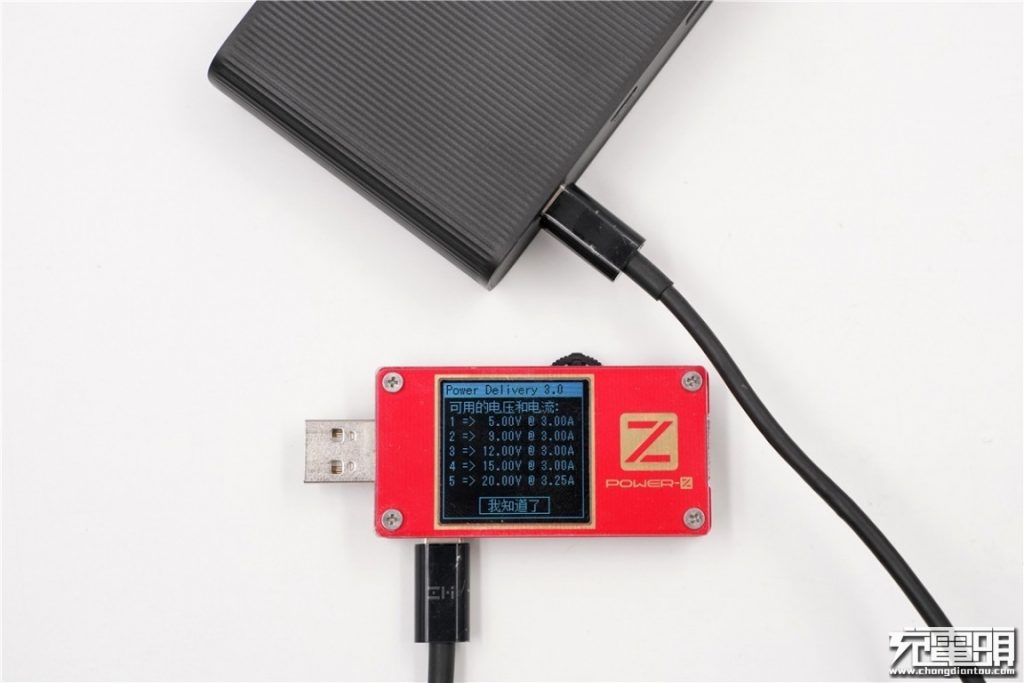
USB-C1 and USB-C2 also support PD fast charging. USB-C1 supports 5V/3A, 9V/3A, 12V/3A, 15V/3A, 20V/3.25A five output steps.
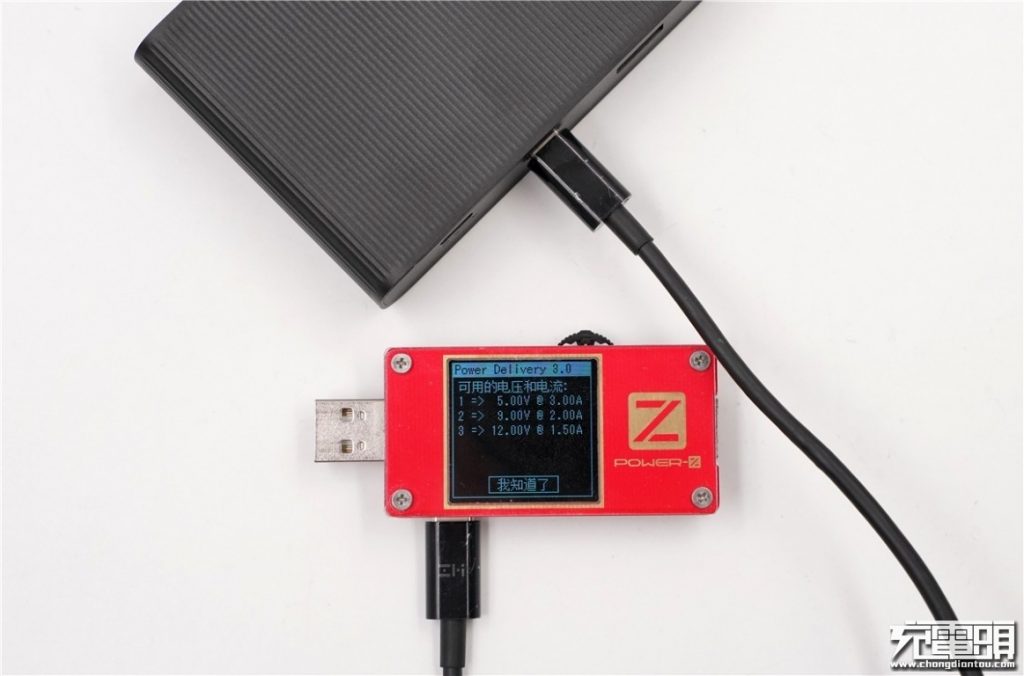
USB-C2 supports 5V/3A, 9V/2A, 12V/1.5A three output steps.
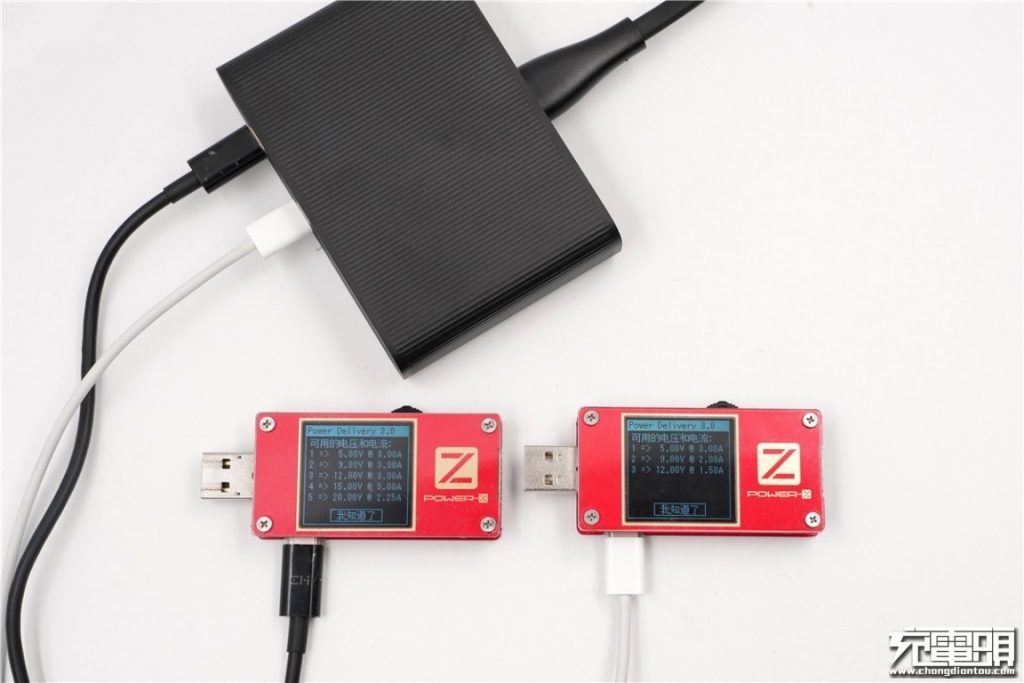
USB-C1 and USB-C2 simultaneously output at the same time. Our POWER-Z KT001 USB testers show that USB-C1 supports 5V/3A, 9V/3A, 12V/3A, 15V/3A, 20V/2.25A, the maximum power is reduced from 65W to 45W; USB-C2 supports 5V/3A, 9V/2A, 12V/1.5A.
II Teardown
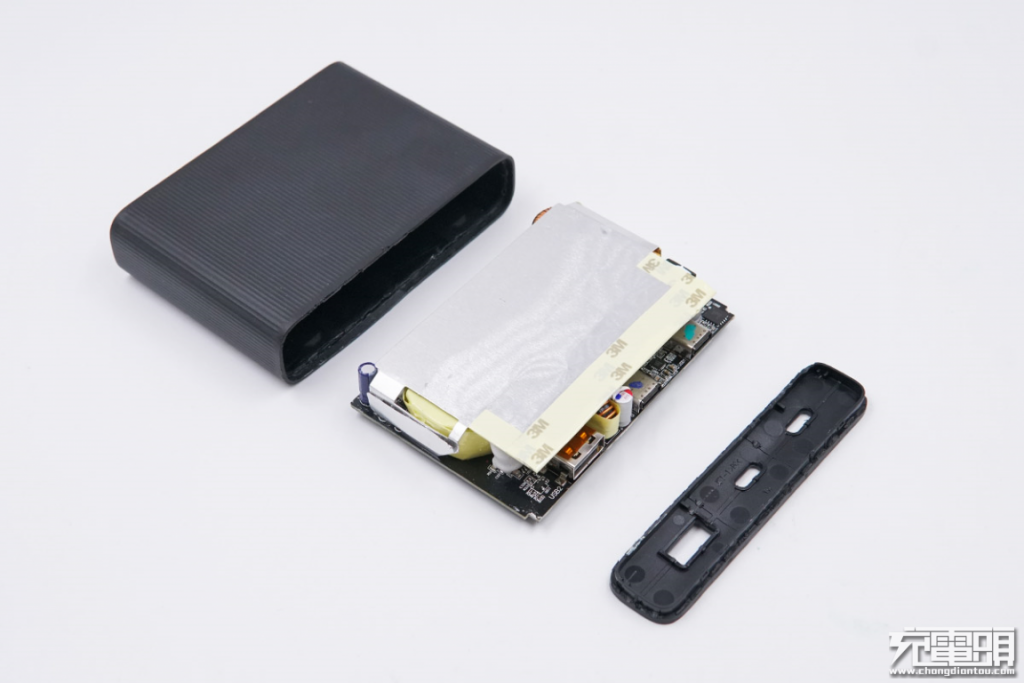
Pry open the gray output port cover which uses clips and ultrasonic welding for sealing. A design that enables non-destructive opening.
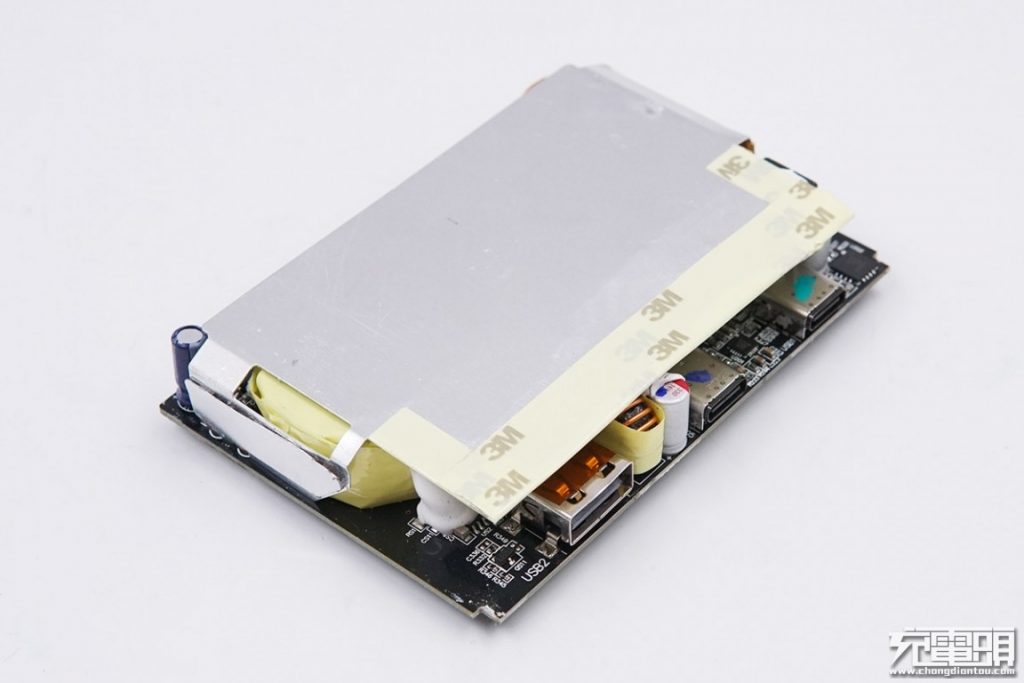
A large metal heat sink is placed on top of the PCBA. Its edges are wrapped by 3M insulation tape.
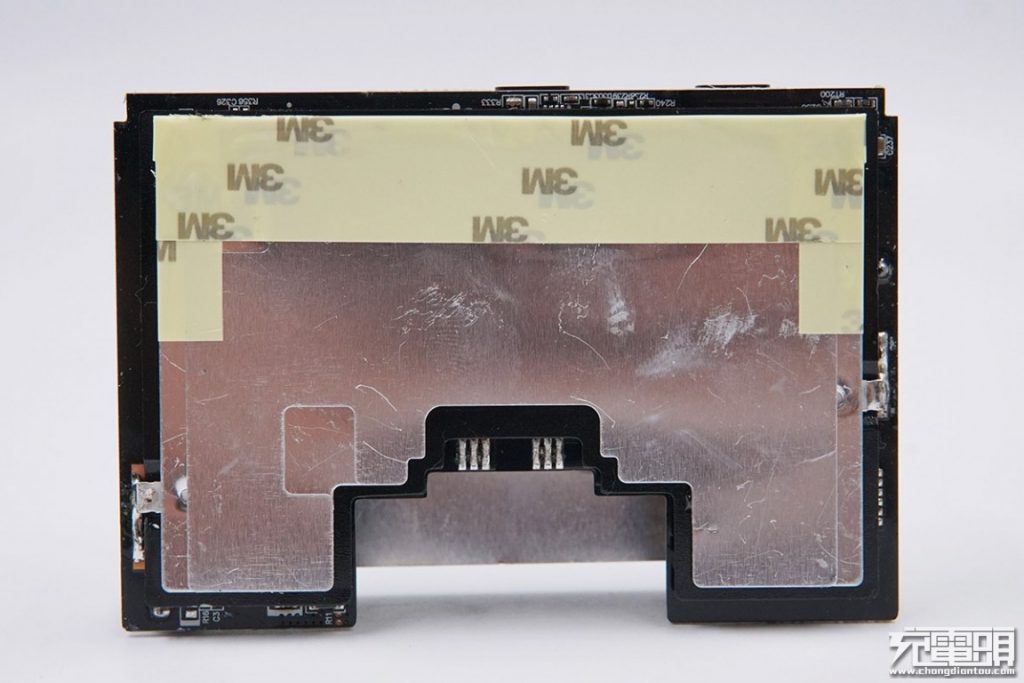
The back is also covered by a similar metal heat sink, insulated with a plastic baffle and 3M tape. The upper and lower pieces are fixed by the solderings at the edges.
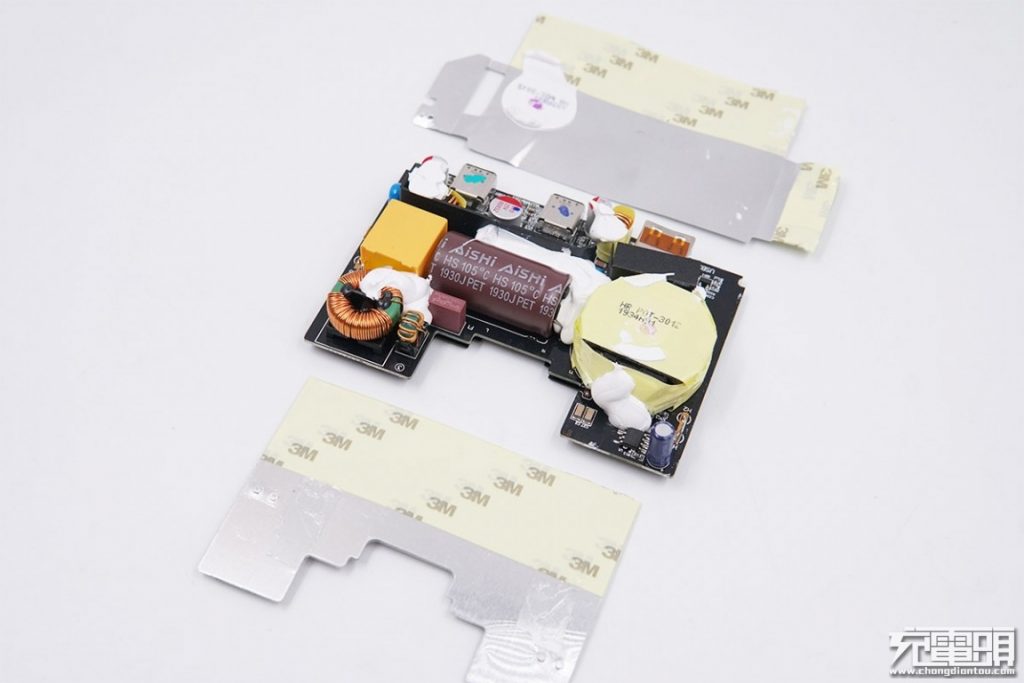
Remove the two metal heat sinks.
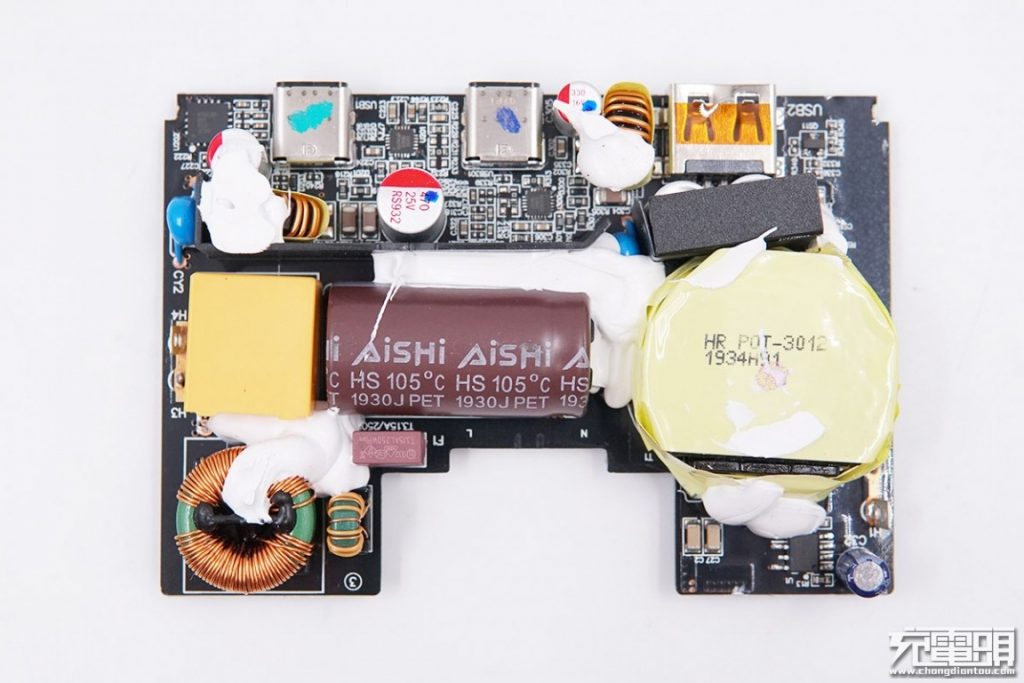
The U-shaped PCB board has a large amount of glue for fixing and heat conduction. The electrolytic capacitor in the center is from Aishi. A long, and a short black plastic insulation baffle are used to isolate the primary and the secondary. The primary and the secondary are clearly separated at a glance.
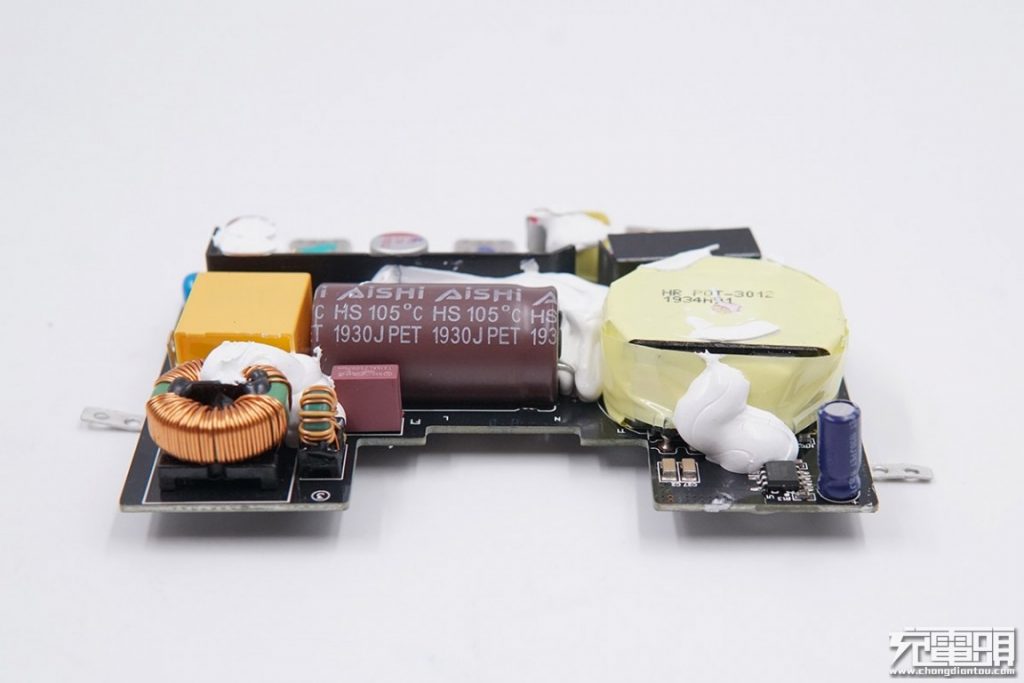
A common mode inductor and a fuse at the input side.
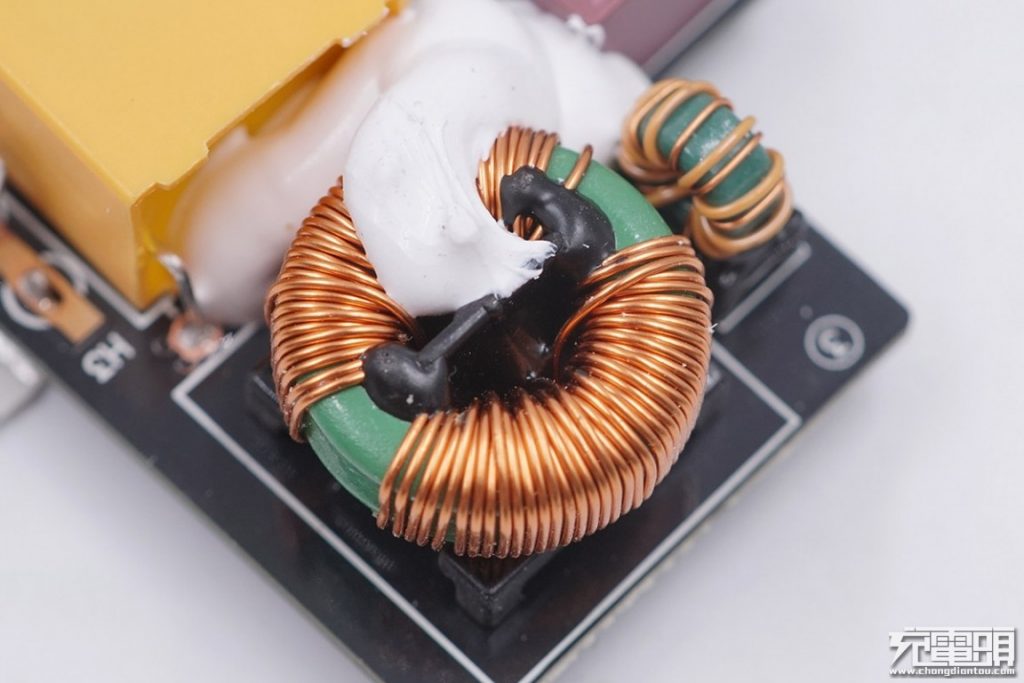
Two levels of common mode inductors are used to suppress EMI interference.
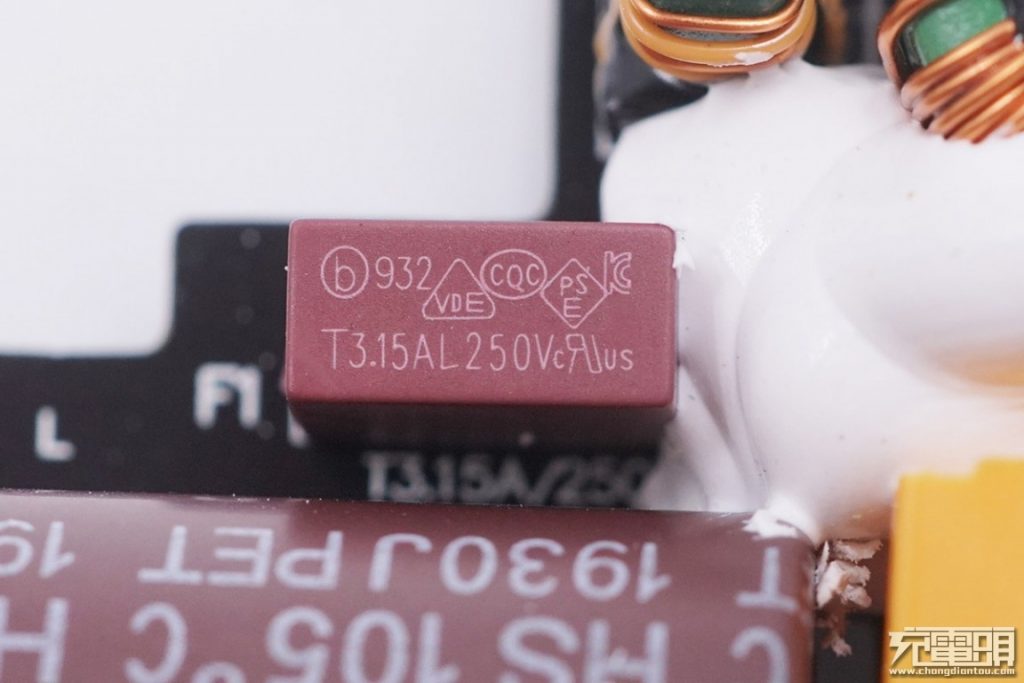
Output time delay fuse, specification 3.15A 250V.
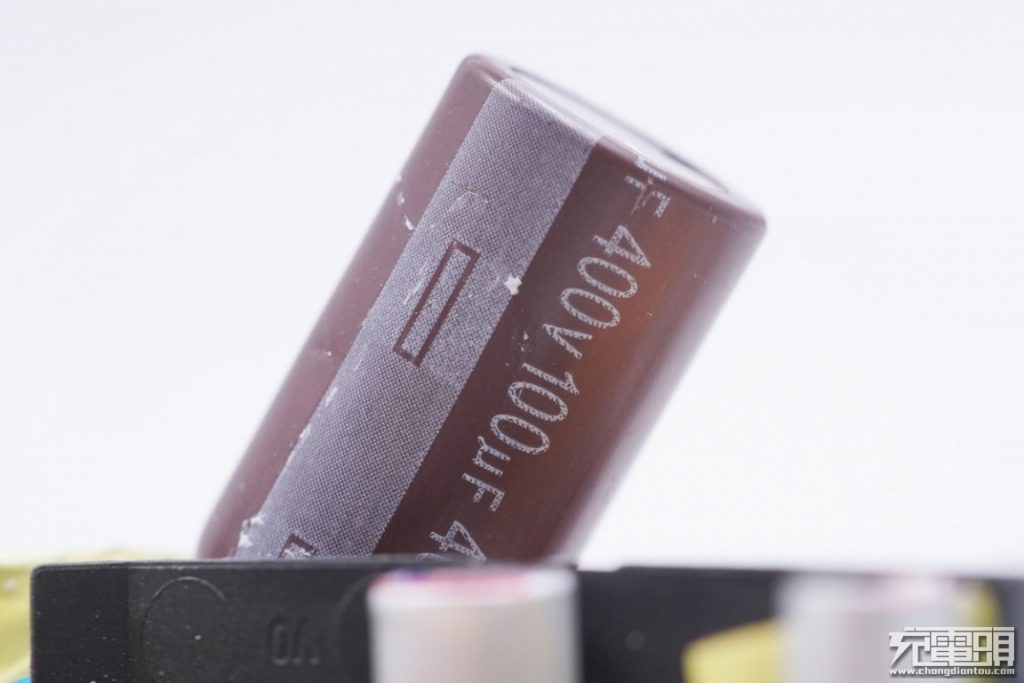
Primary filter electrolytic capacitor, specification 400V100μF.
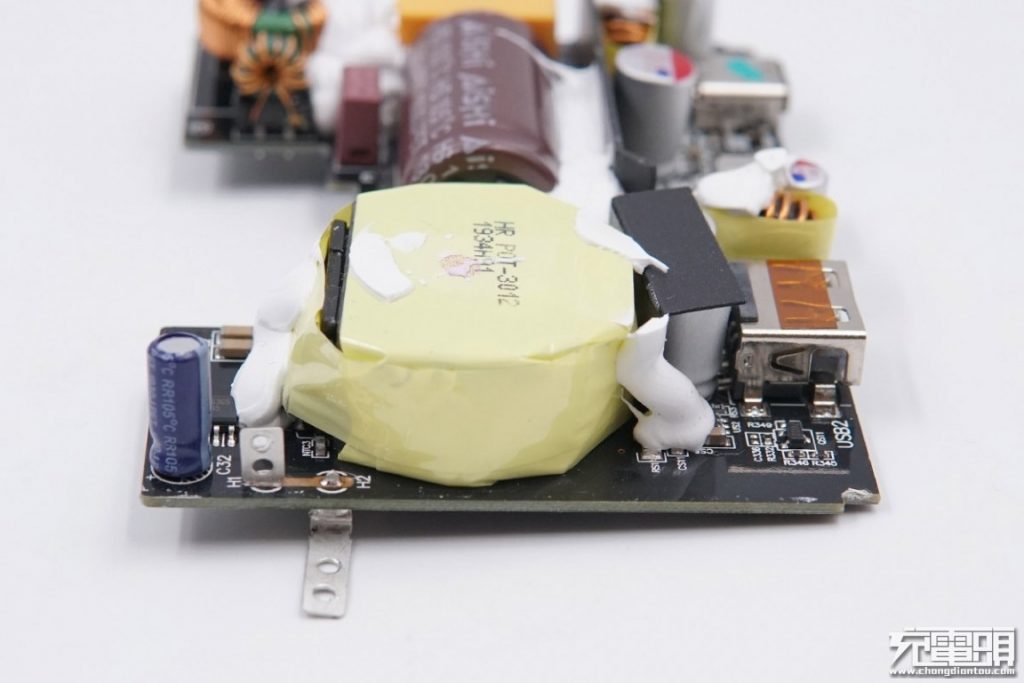
Right view.
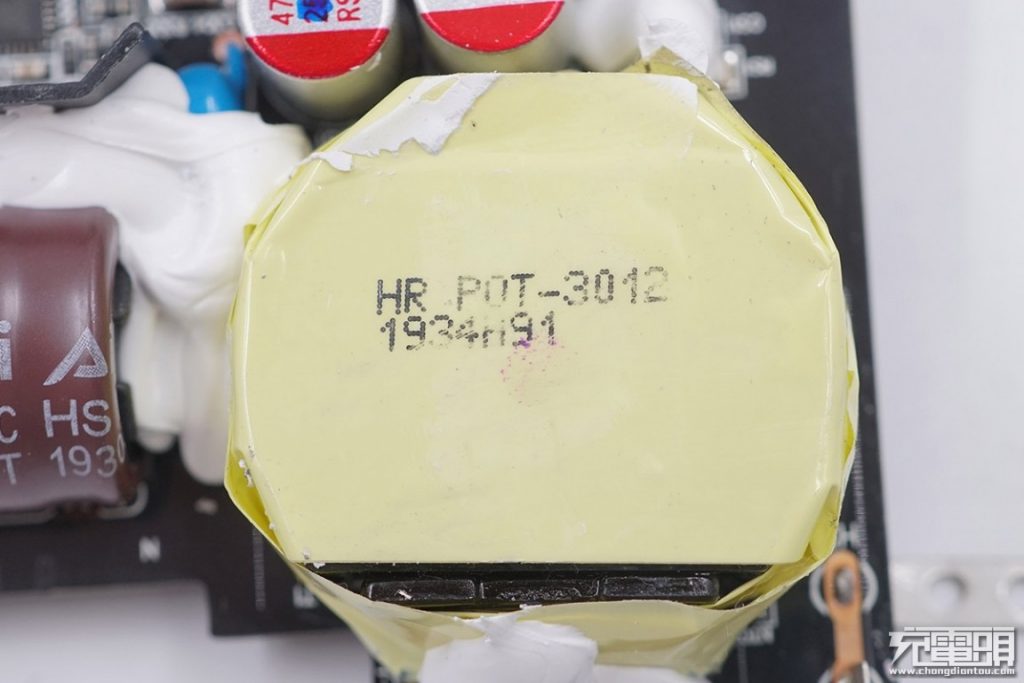
The transformer was wrapped in yellow Mylar tape.
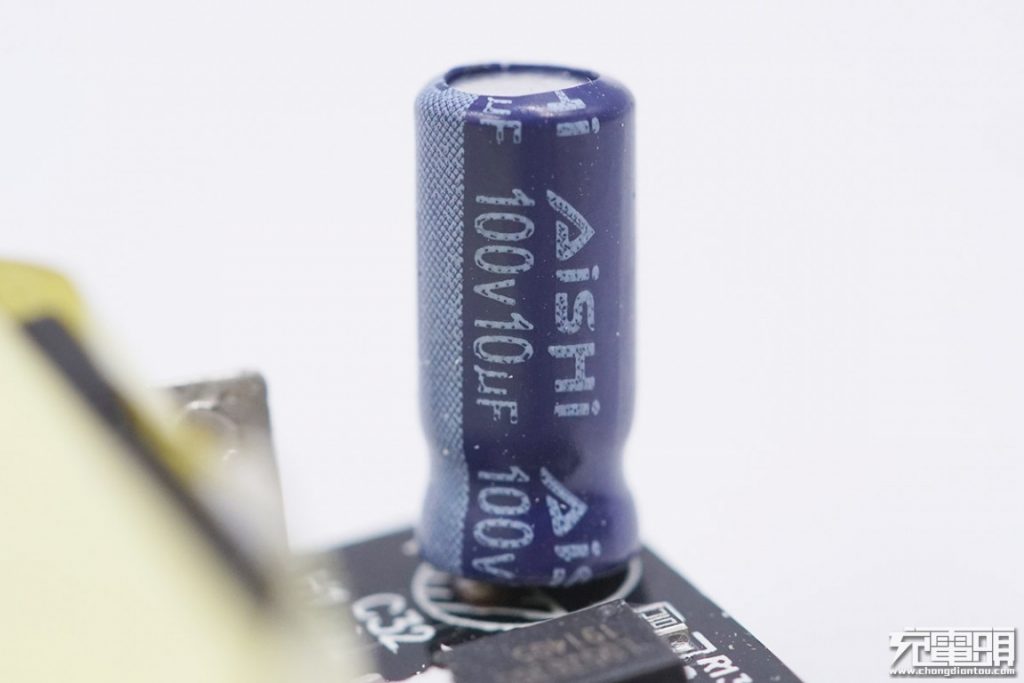
Power supply capacitor for the PWM main controller chip, 100V 10μF, from AiShi.
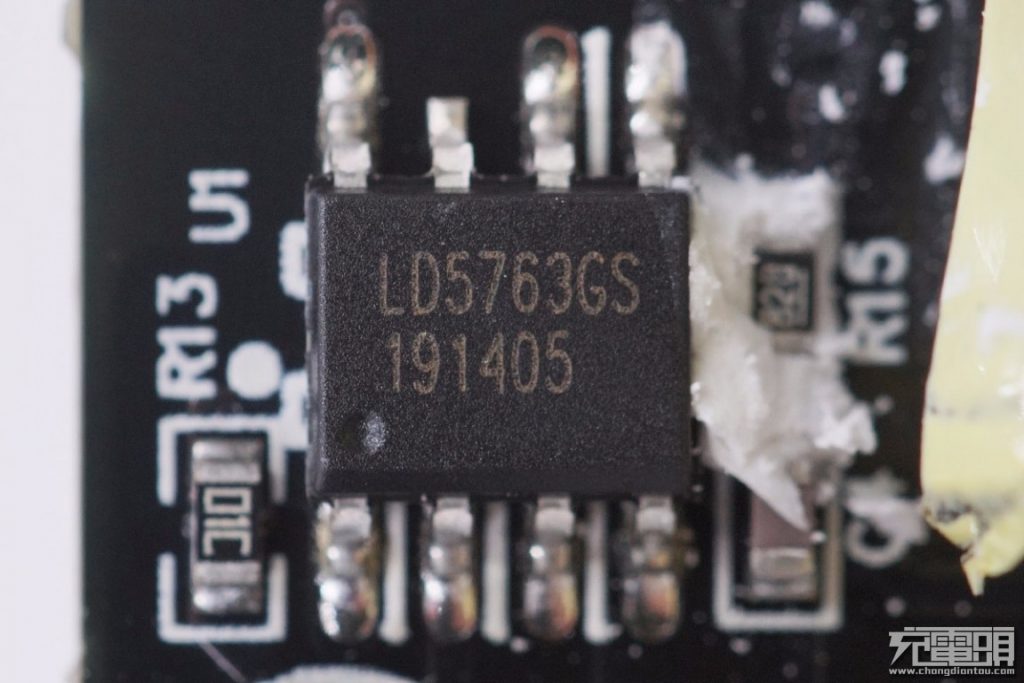
Next to the PWM power supply capacitor is a PWM controller from Leadtrend, model LD5763GS. It is a green mode PWM IC built-in with brown-in/out functions in an SOP-8 package. It minimizes the component counts, circuit space, and reduces the overall material cost for the power applications. It also features HV start, green-mode power-saving operation, and internal slope compensation, soft-start functions to minimize the power loss and enhance the system performance.
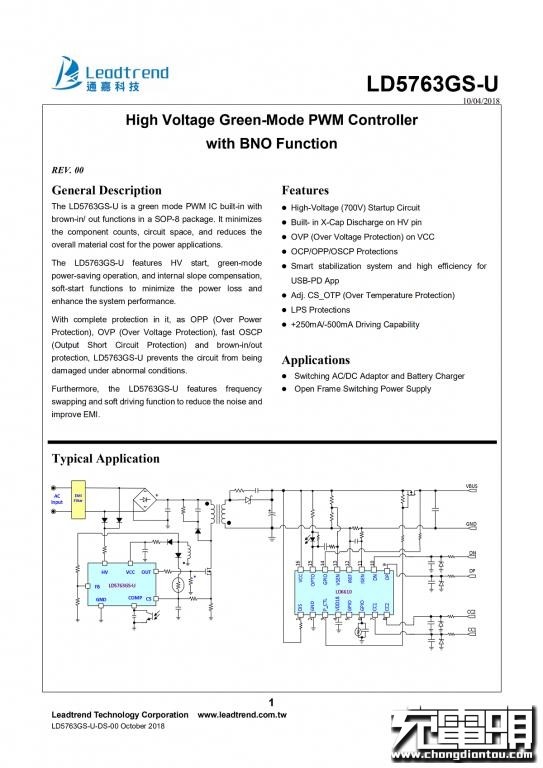
With complete protection in it, as OPP (Over Power Protection), OVP (Over Voltage Protection), fast OSCP (Output Short Circuit Protection) and brown-in/out protection, LD5763GS prevents the circuit from being damaged under abnormal conditions. Furthermore, the LD5763GS features frequency swapping and soft driving function to reduce the noise and improve EMI.
We have also found this chip inside the Lenovo Thinkplus PA65 65W charger, and the Nubia Red Magic 30W USB PD and PPS Charger.
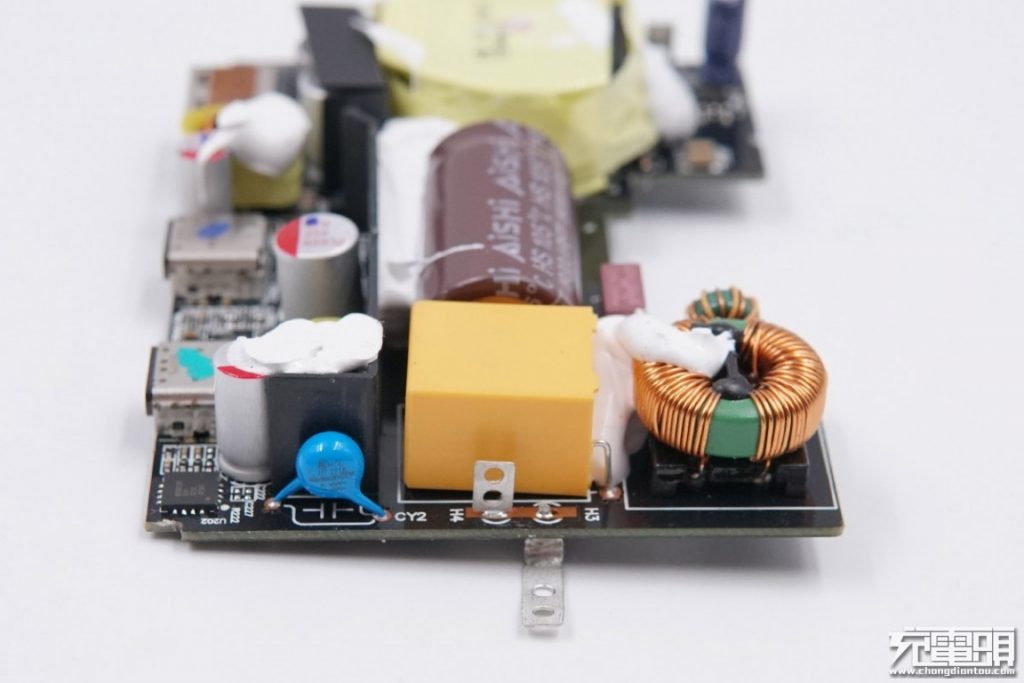
On the left side, we have a blue Y capacitor and a yellow X capacitor.
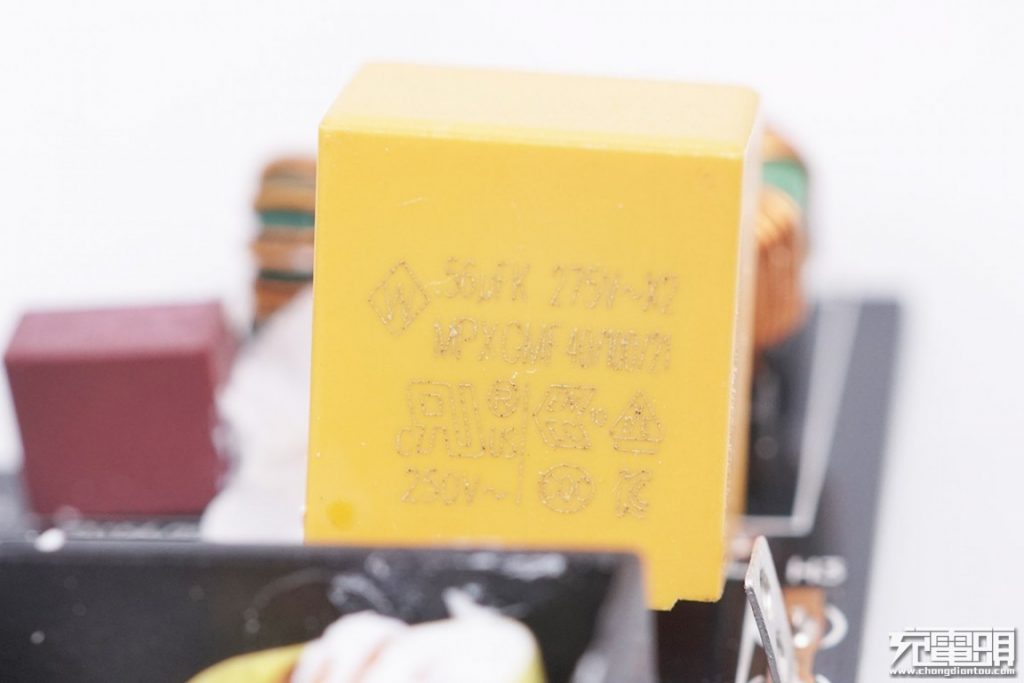
A safety X capacitor, rated voltage 275V AC.
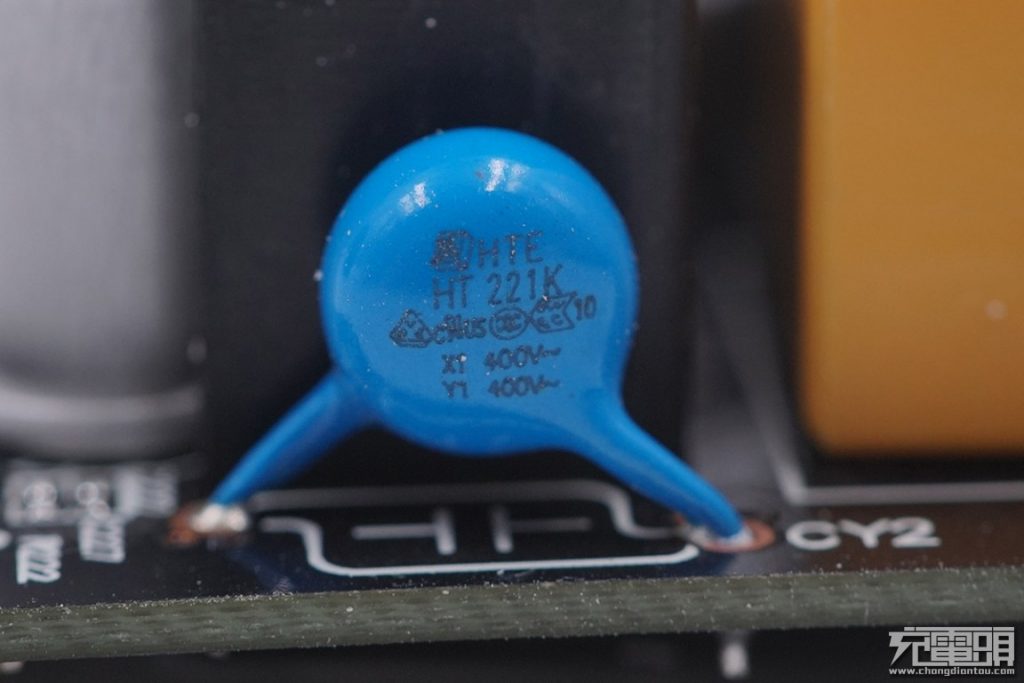
A blue Y capacitor for interference suppression.
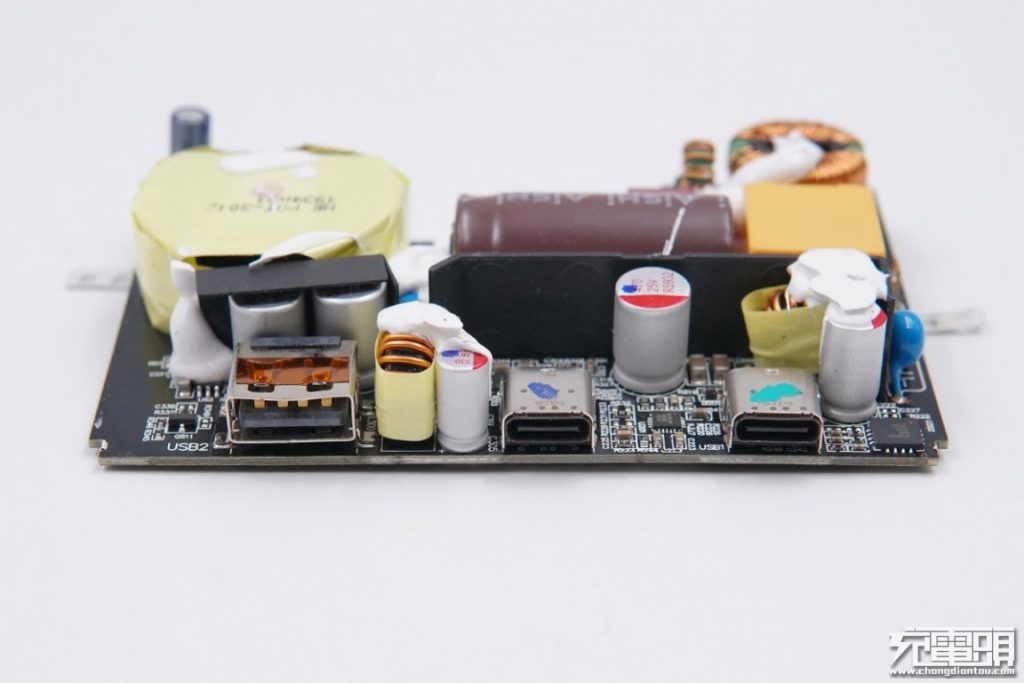
Looking at the output side, there are five solid capacitors of different sizes, three output ports, and two step-down inductors, two of which use glue around them.Through the distribution of the two inductors and the output strategy of each port, we can learn that this 2C1A charger uses a secondary buck structure. The USB-C1 interface is a one-way output, and the other 1A1C ports share a buck circuit.
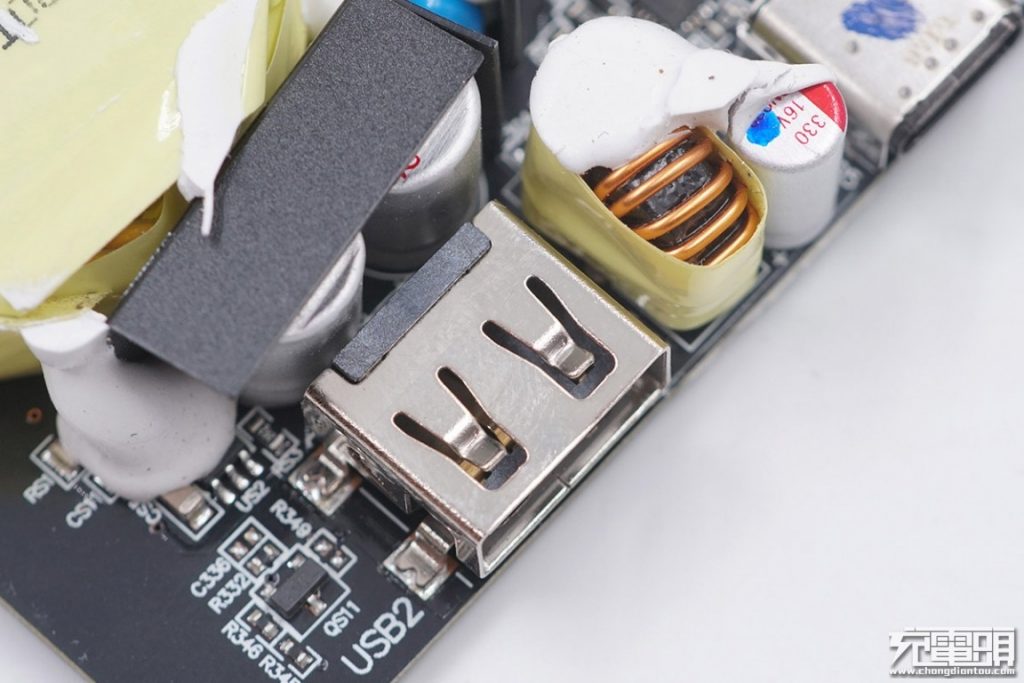
Close-up of the USB-A port. Behind are two solid capacitors covered by plastic baffles, and a buck inductor and an output filter solid capacitor on the right.
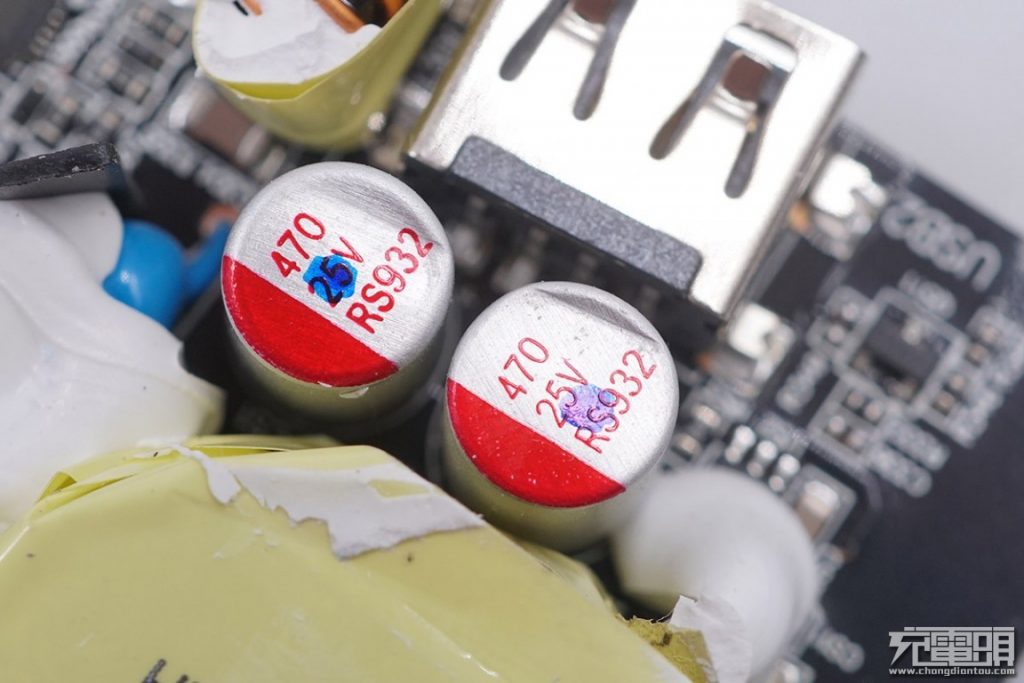
Close-up of the AC-DC output filter solid capacitors, both are 470μF 25V, used as input filtering for secondary buck of the secondary side.
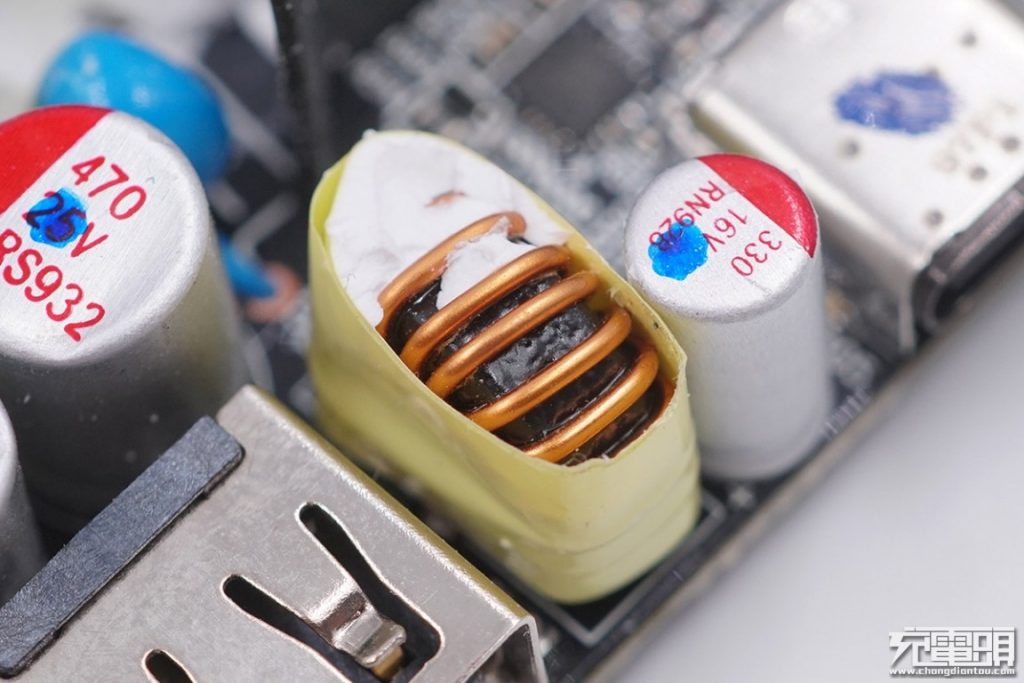
The buck inductor for USB-C2 port and USB-A port circuit, wrapped with yellow Mylar tape. Next to it is an output filter solid capacitor, 330μF 16V.
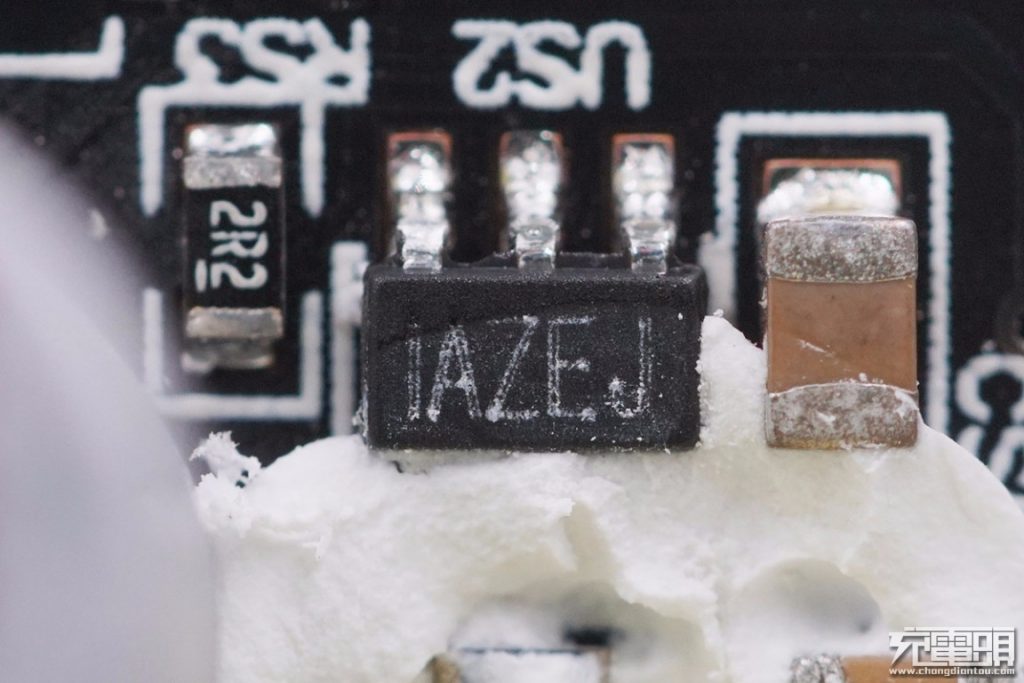
Beside the USB-A port is a secondary synchronous rectification controller from MPS, model MP6908, with IAZEJ marking.
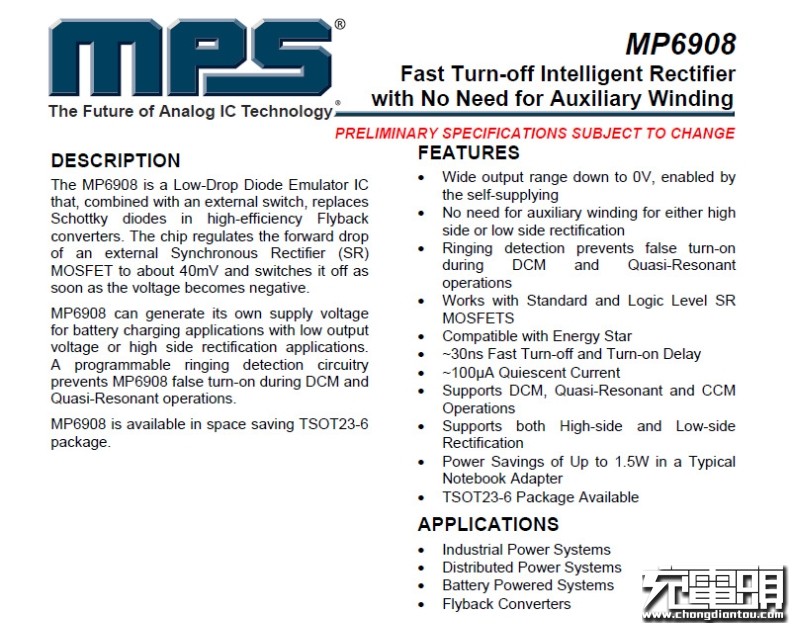
Detailed specifications of the MPS MP6908.We have also found this chip inside the ZMI zPower Turbo 65W PD Charger (HA712), Aukey PA-Y19 27W GaN PD Charger, and the Lenovo Thinkplus PA65 65W PD charger.
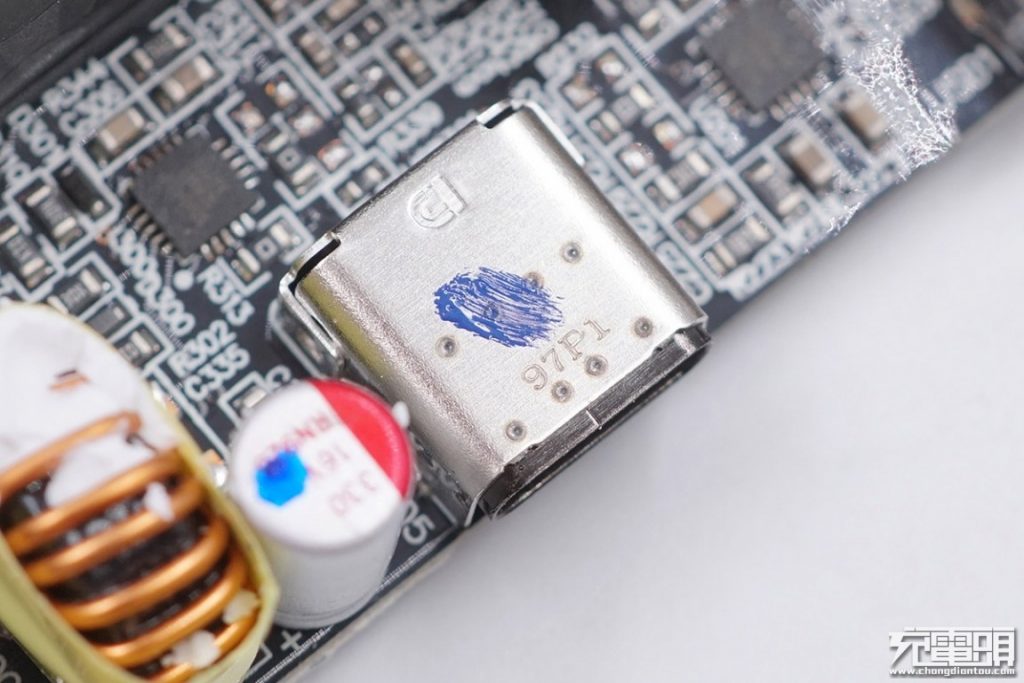
Close-up of the USB-C2 port.
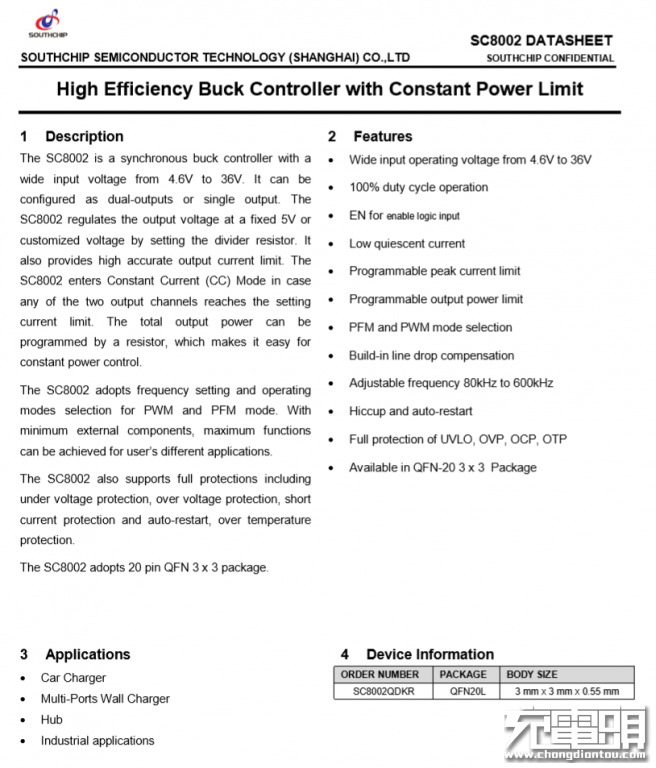
A SC8002 from Southchip as the buck controller for the USB-A port and the USB-C2 port. The SC8002 is a synchronous buck controller with a wide input voltage from 4.6V to 36V. It can be configured as dual-outputs or single output. The SC8002 regulates the output voltage at a fixed 5V or customized voltage by setting the divider resistor. It also supports full protections including under voltage protection, over voltage protection, short current protection and auto-restart, over temperature protection.
Detailed specifications of the Southchip SC8002.
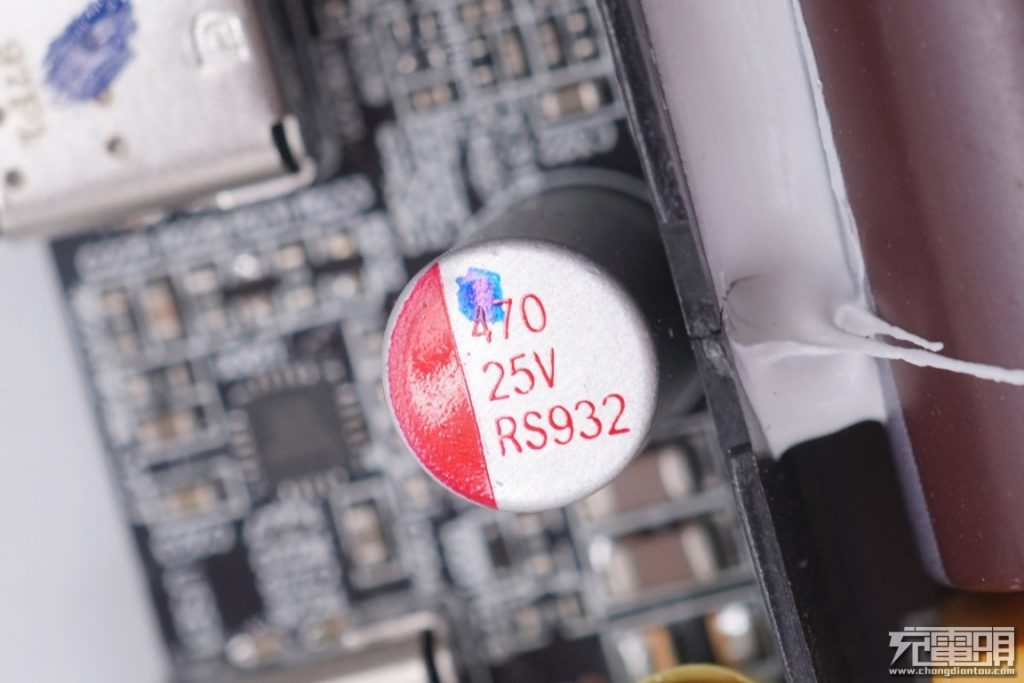
Close-up of the output filter solid capacitor for the USB-C1 port which is in the middle of two USB-C ports, 470μF 25V.
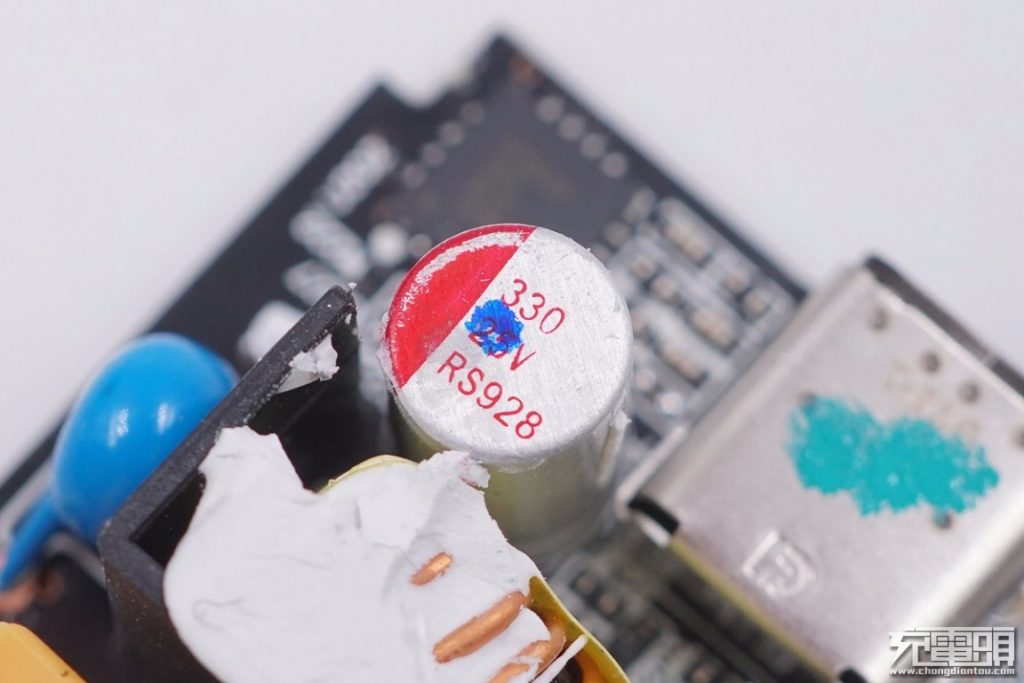
Close-up of another output filter solid capacitor, next to the USB-C1 port, 330μF 25V. It works in conjunction with the solid capacitor mentioned above to act as an output filter for the USB-C1 port.
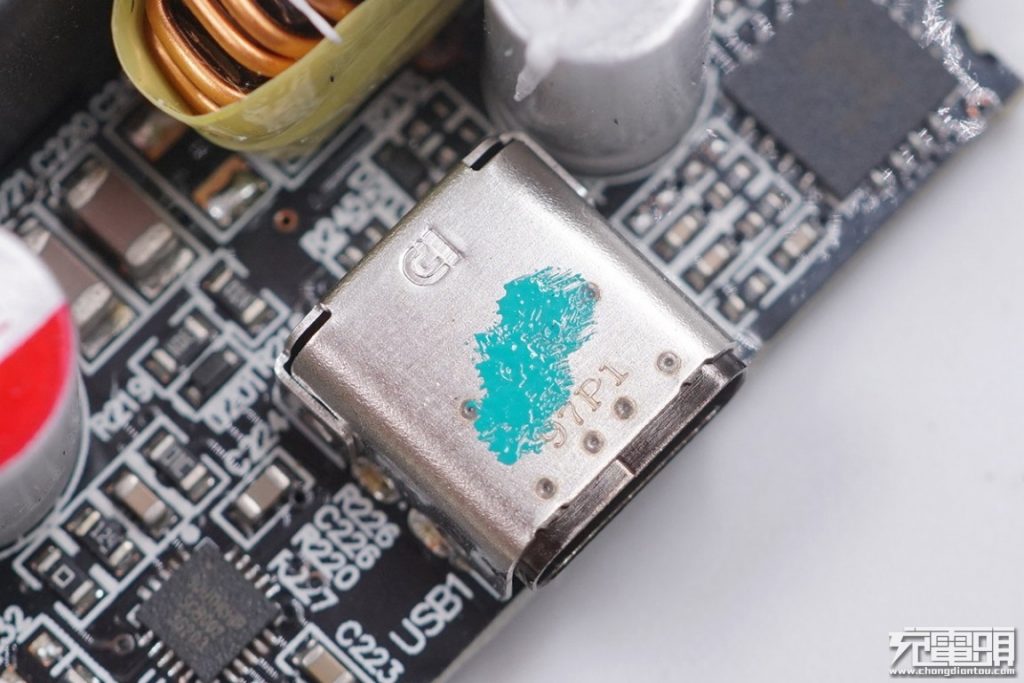
Close-up of the USB-C1 port.
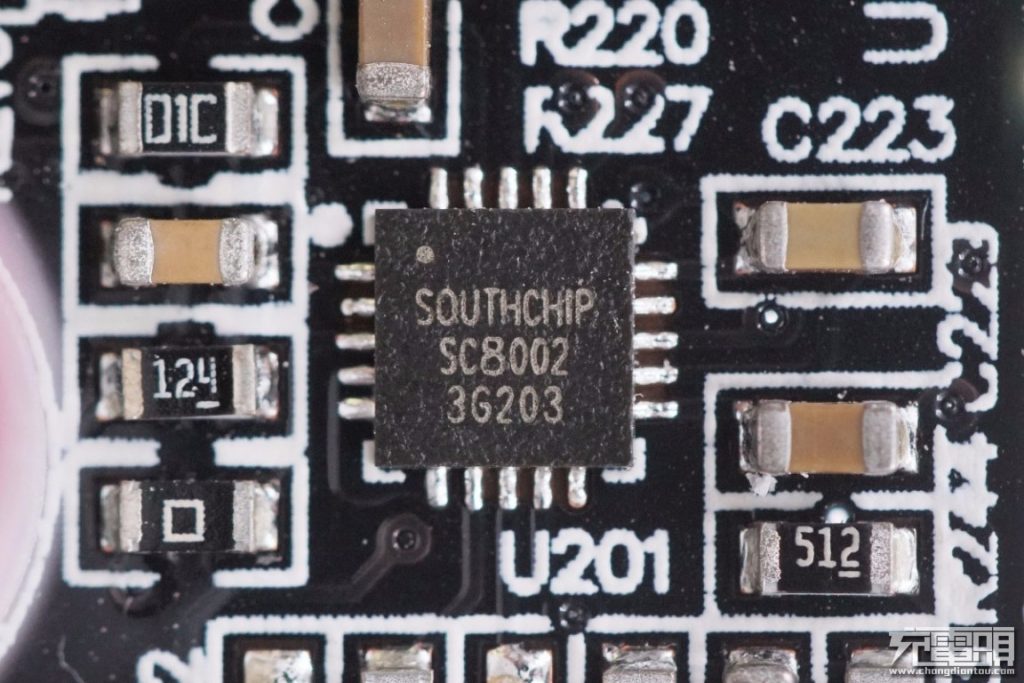
Another SC8002 from Southchip as the synchronous buck controller for the USB-C1 port.
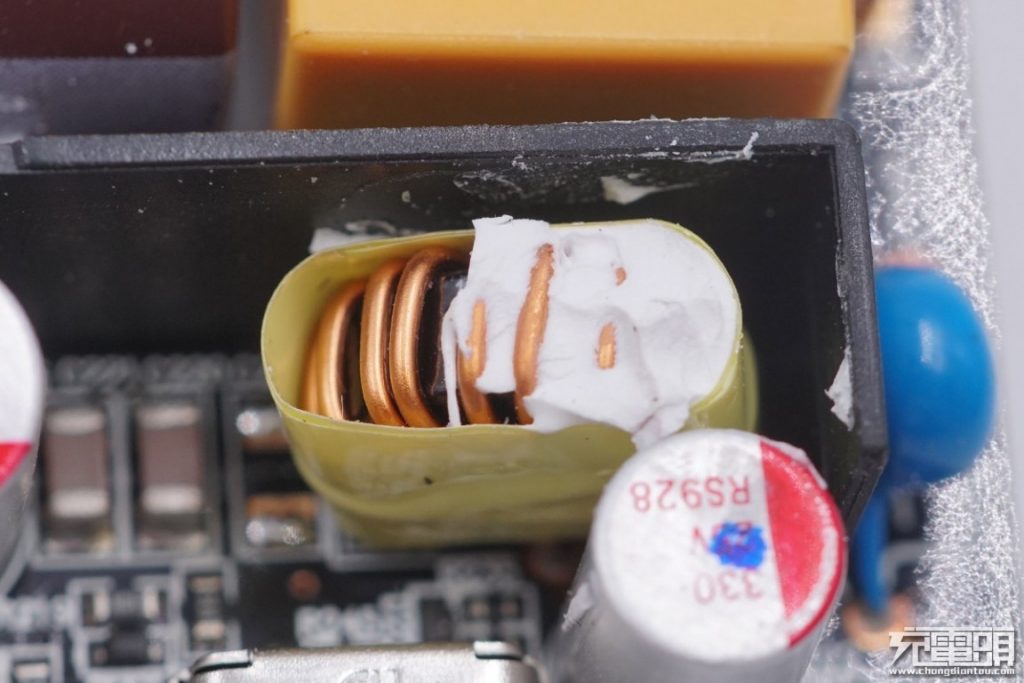
The buck inductor for USB-C1 port, wrapped with yellow Mylar tape.
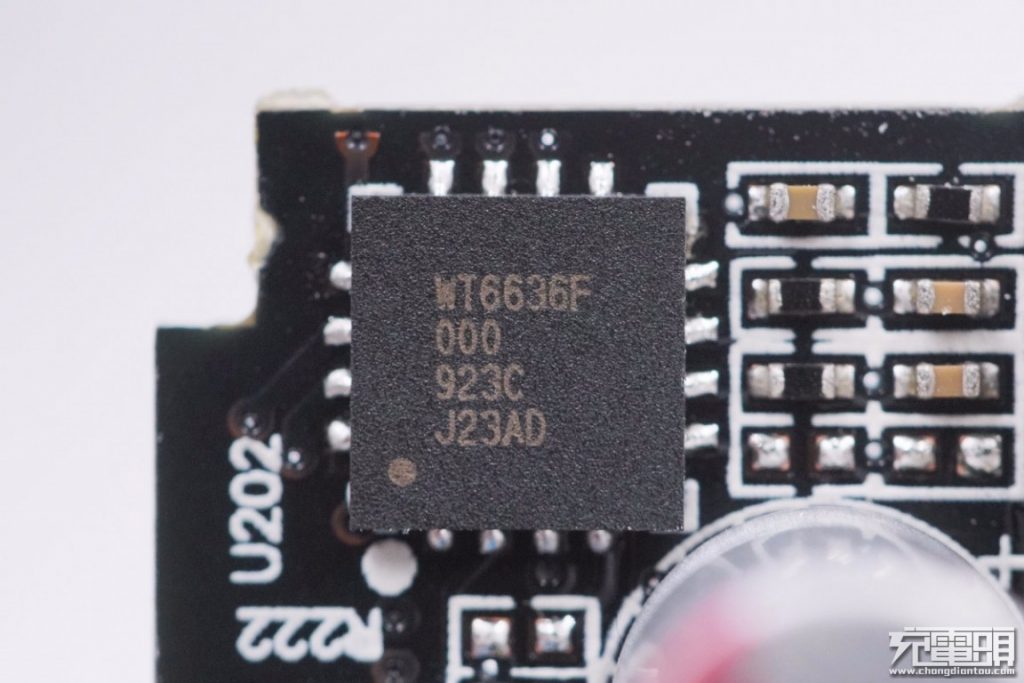
A Weltrend WT6636F is used as the USB-C interface controller. It is a protocol chip (TID No. 1080018) certified by the USB-IF USB PD3.0 (PPS), we have seen it inside the Ravpower 30W and 61W GaN chargers, ZMI zPower Turbo 65W PD Charger (HA712), and the Lenovo Thinkplus PA65 65W PD charger.
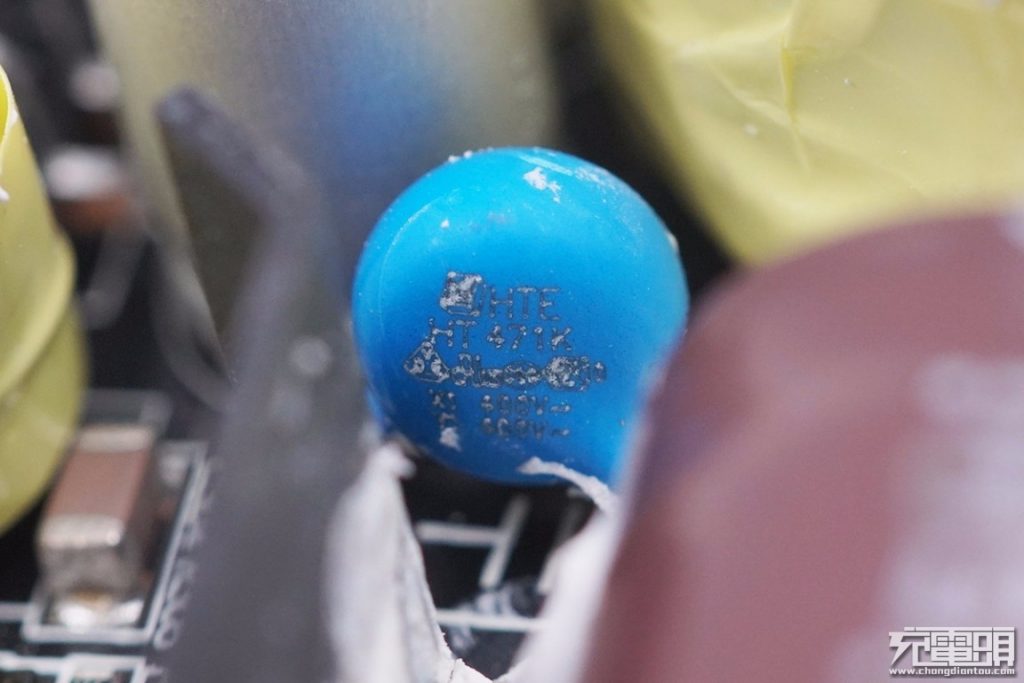
A blue Y capacitor is soldered next to the transformer and the solid capacitor, and the silicone rubber covering it has been removed.
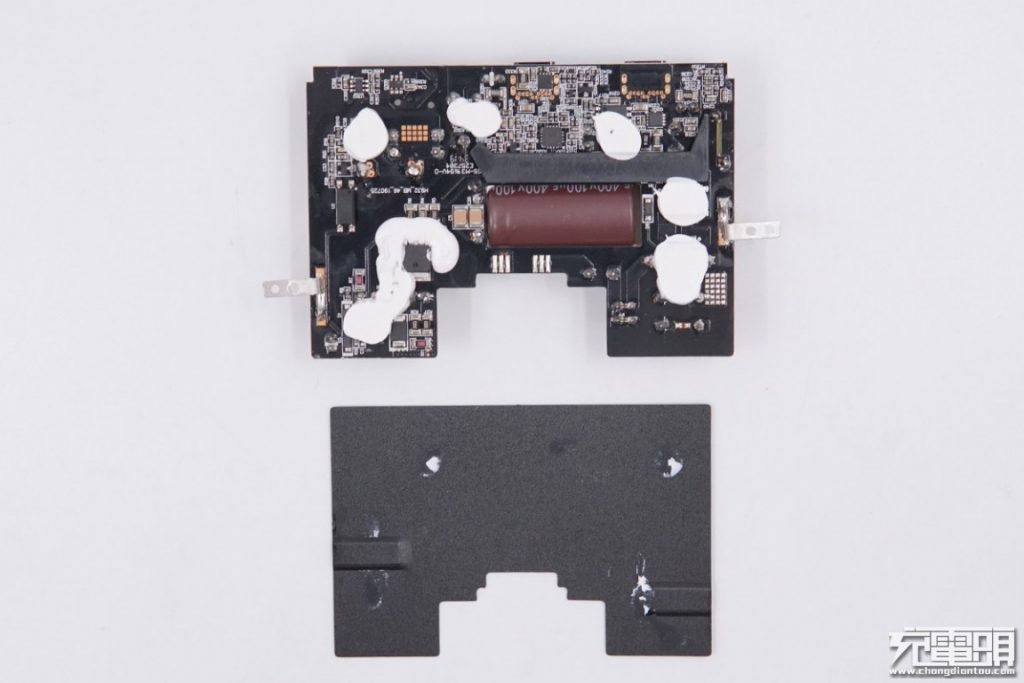
The black plastic plate is sandwiched between the PCB board and the metal sheet, and is fixed by the glue for insulating and structural support.
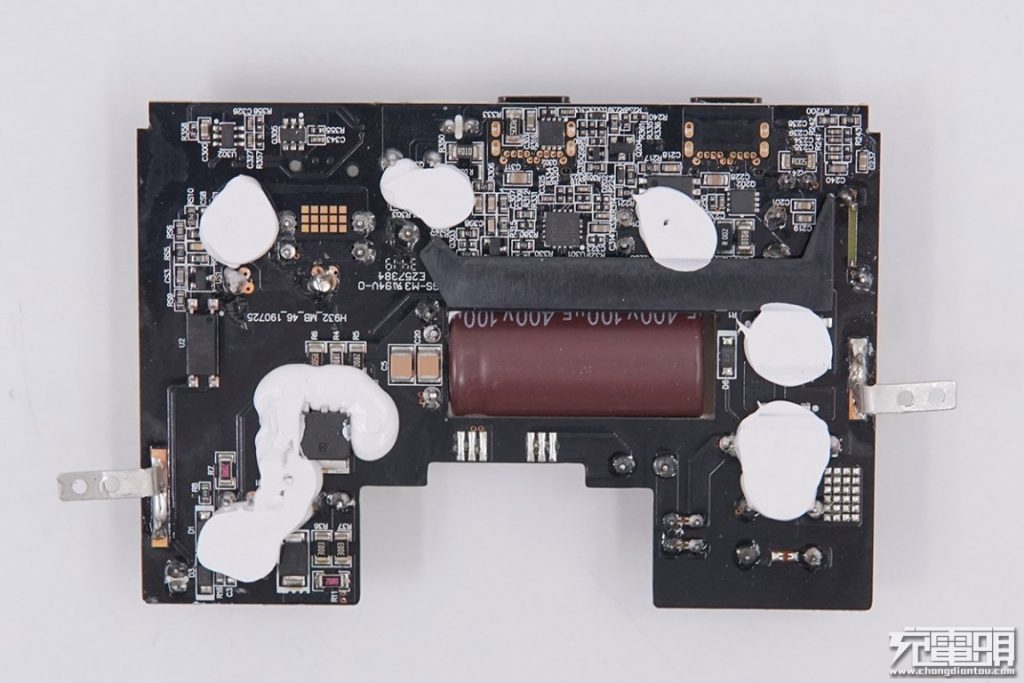
Since only one primary filter electrolytic capacitor is used, the size of the capacitor is relatively large. It is horizontally installed in the hollowed-out area of the PCB to save space. At the same time, it can be seen that the main heating components on the back of the PCB are glued to help heat conduction.
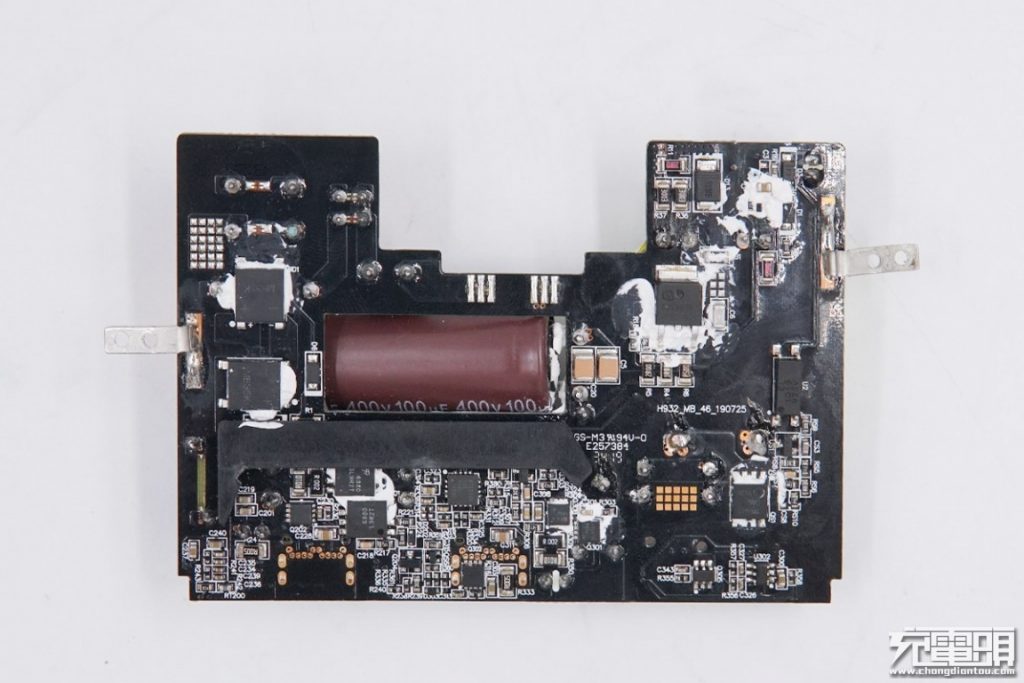
This is the picture after removing the thermal silica gel. Let's continue to analyze the rest of the components.
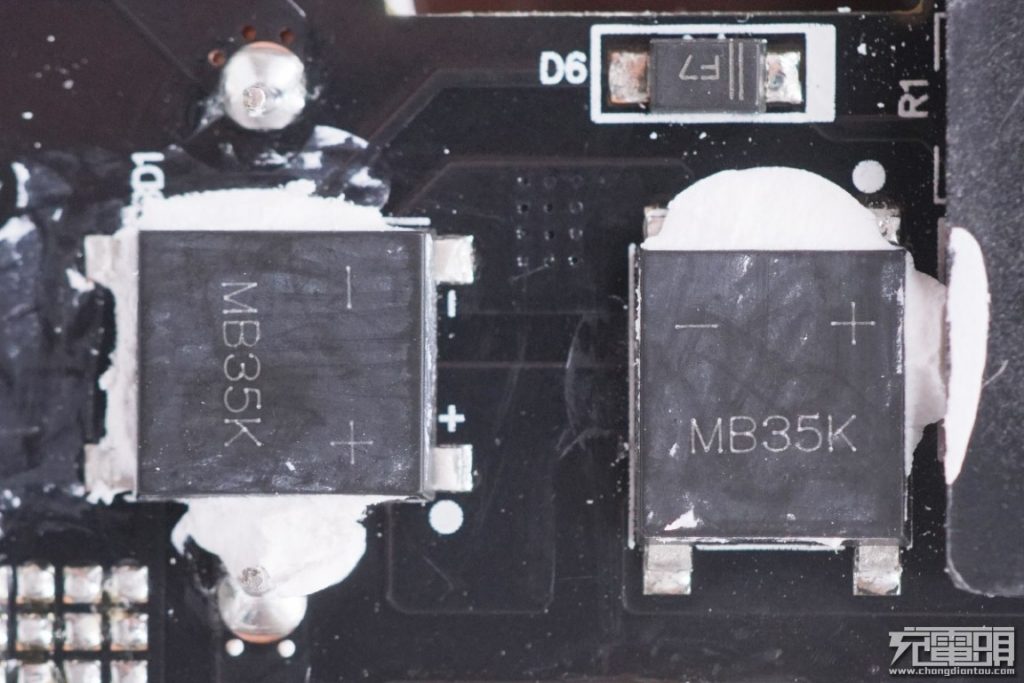
Two MB35K rectifier bridges are used at the input to even the heat.
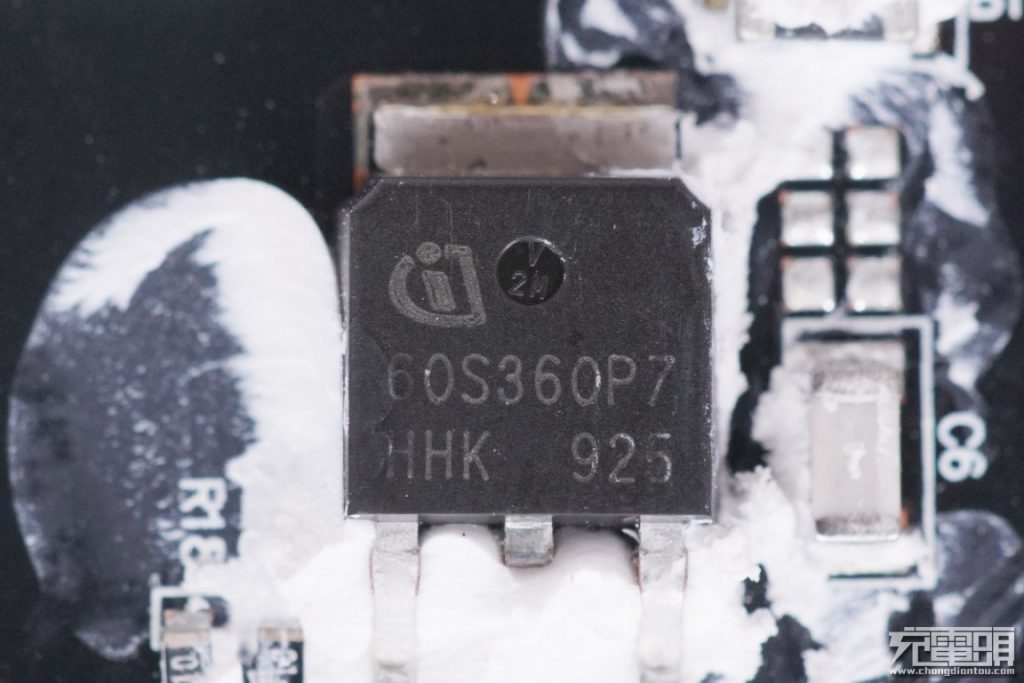
The MOSFET for the primary side is an Infineon's superjunction CoolMOS P7, model IPD60R360P7S, 650V withstand voltage and 360mΩ resistance.
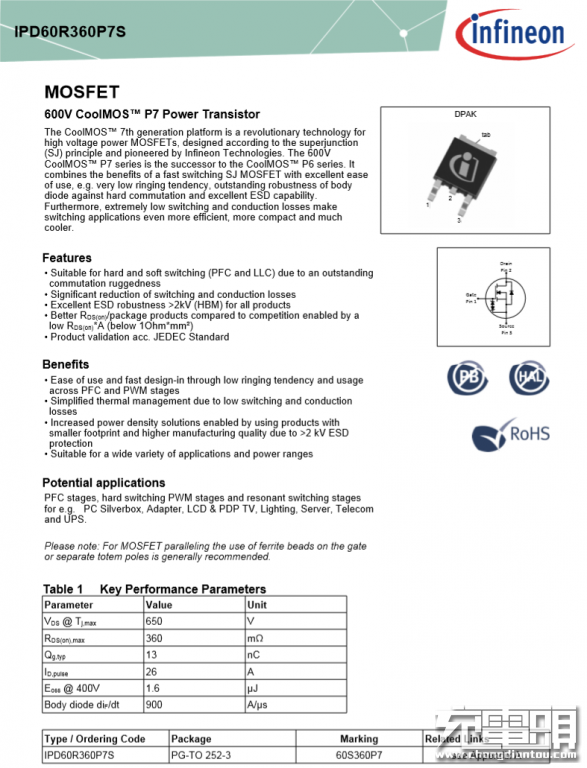
Detailed specifications of the Infineon IPD60R360P7S.
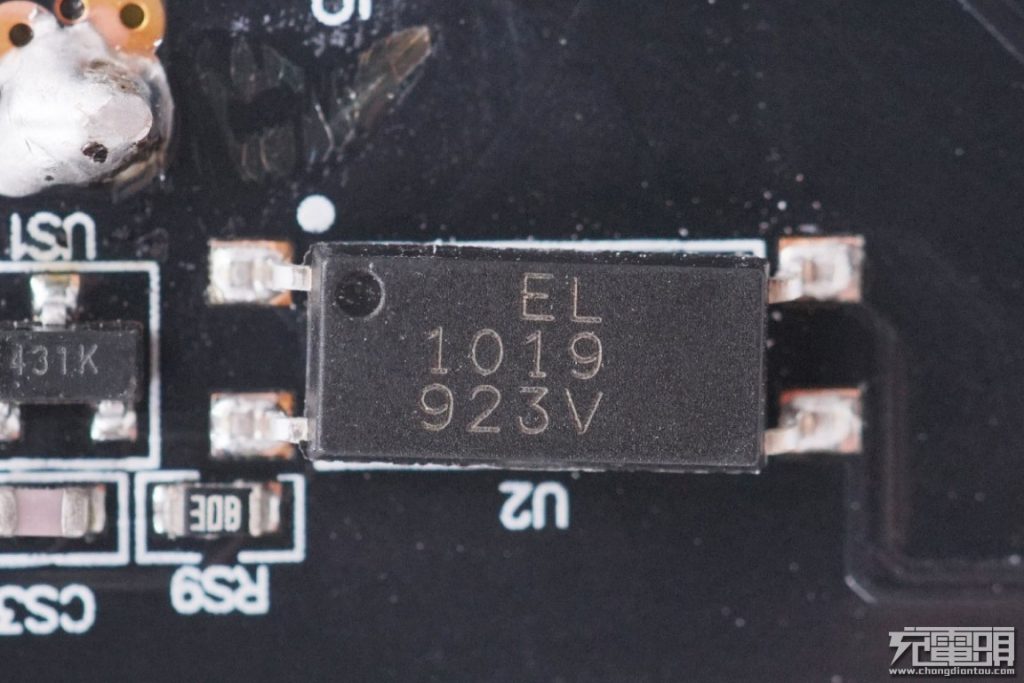
Everlight EL1019 optocoupler for adjusting and feedback of the output voltage.
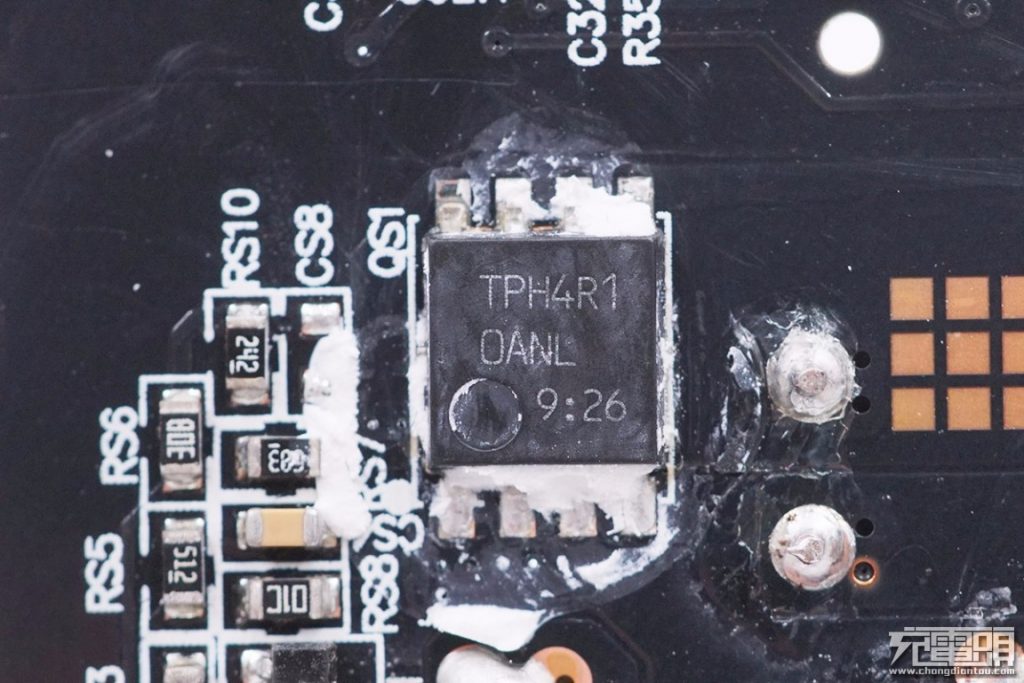
Secondary synchronous rectification MOSFET, a Toshiba TPH4R10ANL.
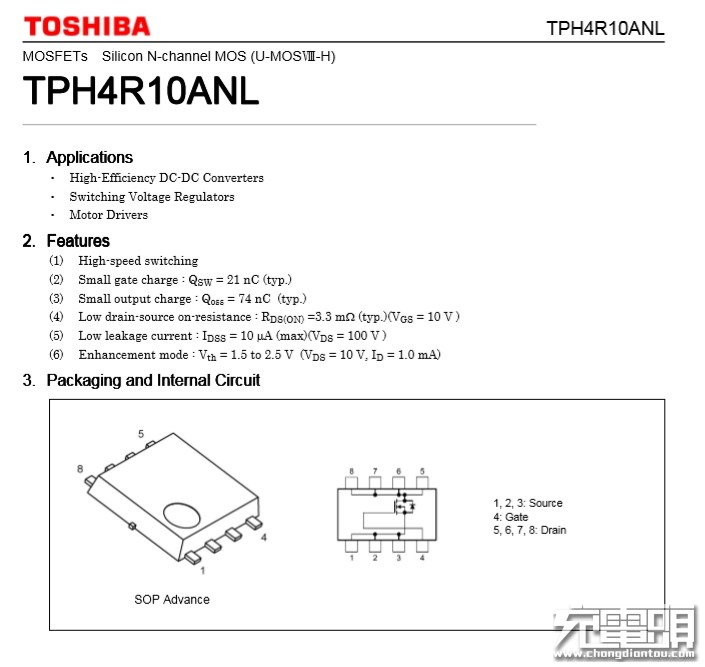
Detailed specifications of the Toshiba TPH4R10AN.
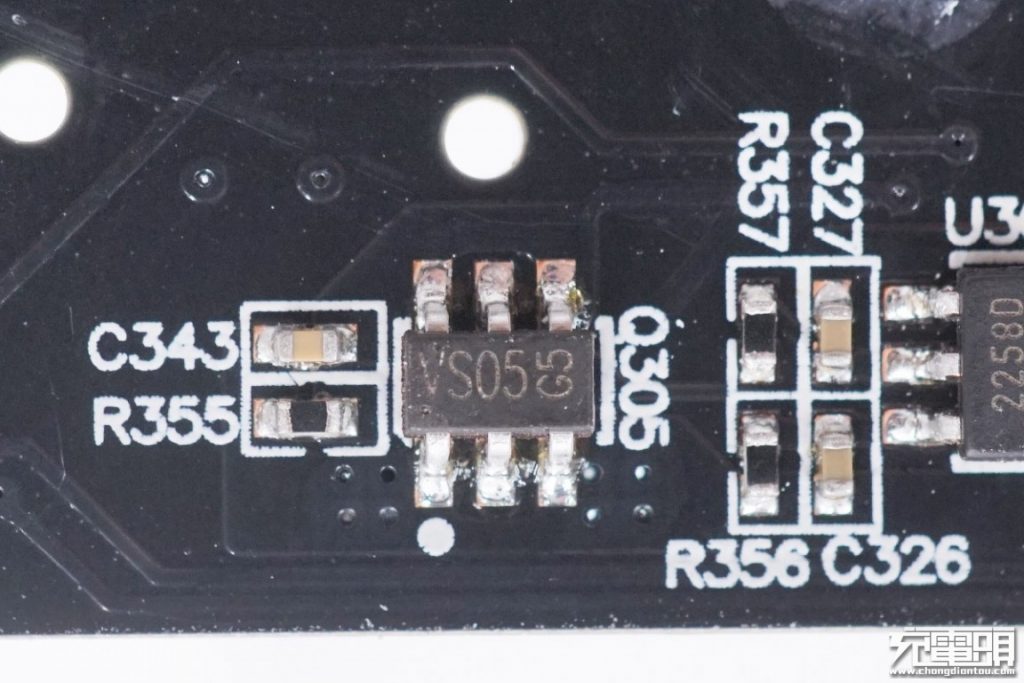
A MOSFET with VS05 marking.
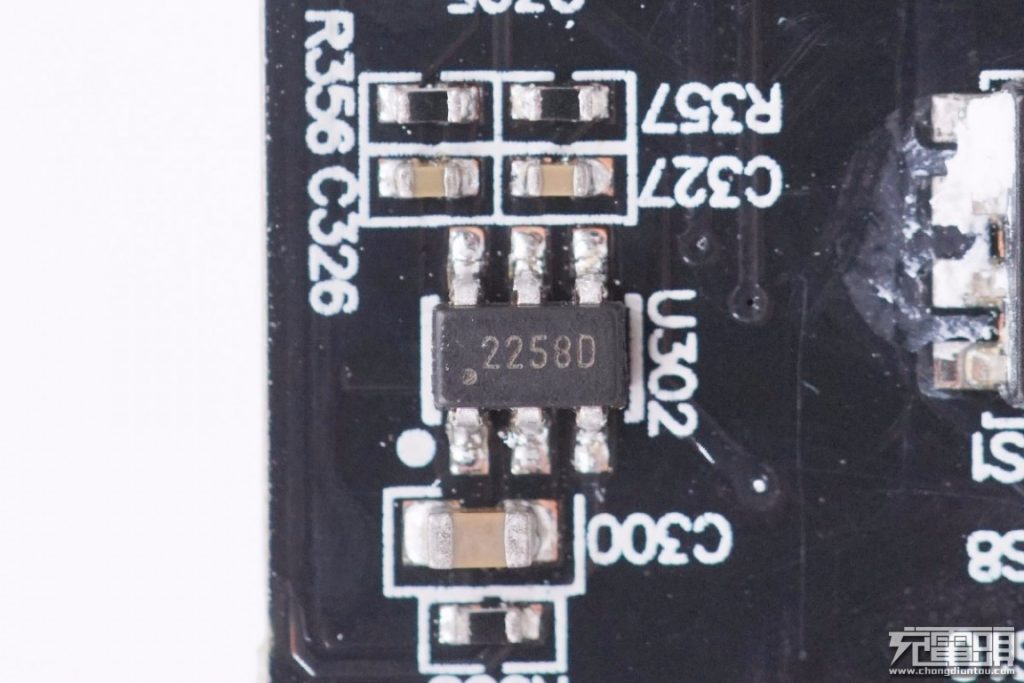
A ZMI custom IC, with 2258D marking.
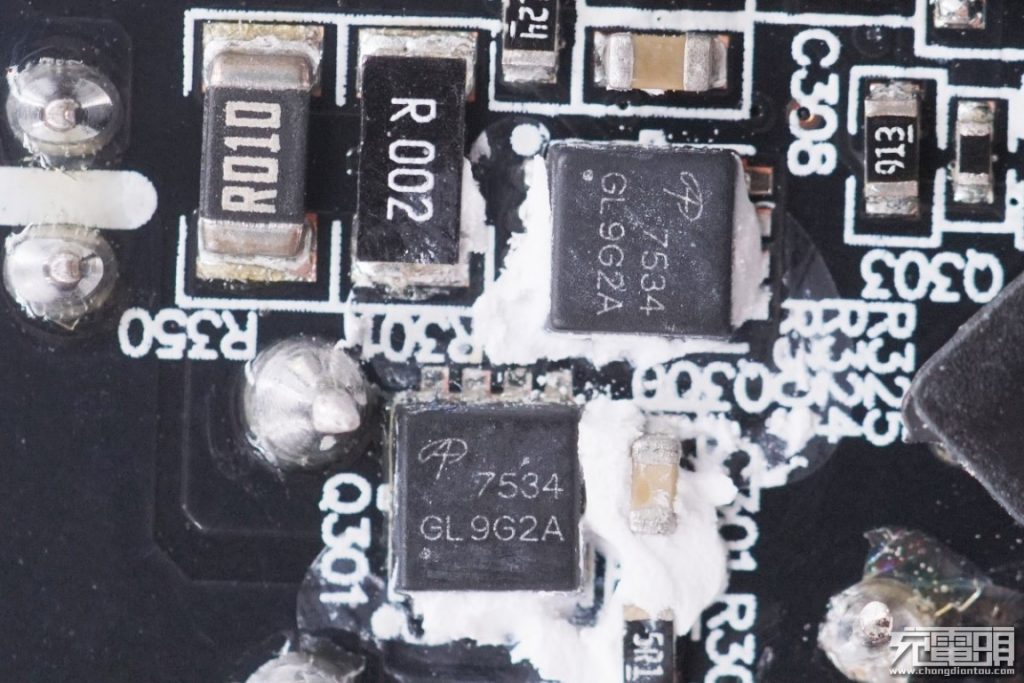
Two AOS secondary step-down synchronous rectification MOS, model AON7534. They work with the Southchip SC8002 to provide bucking for the USB-A and USB-C2 ports.
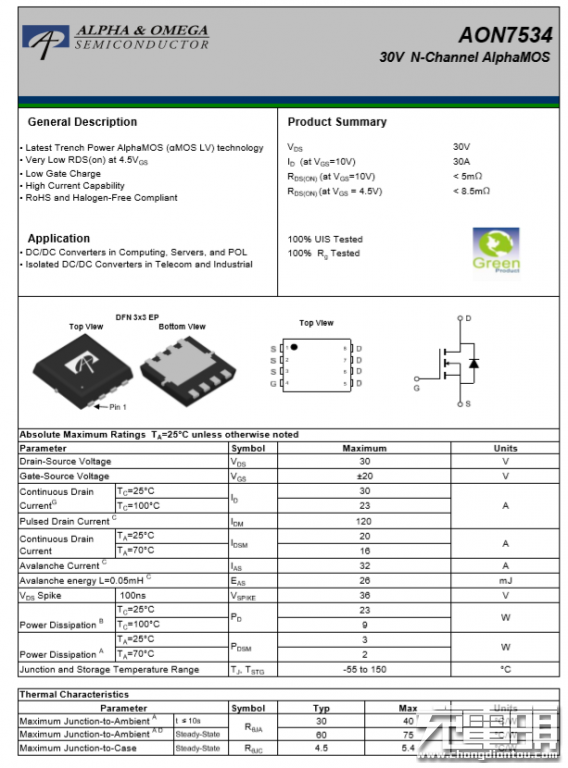
Detailed specifications of the AOS AON7534.
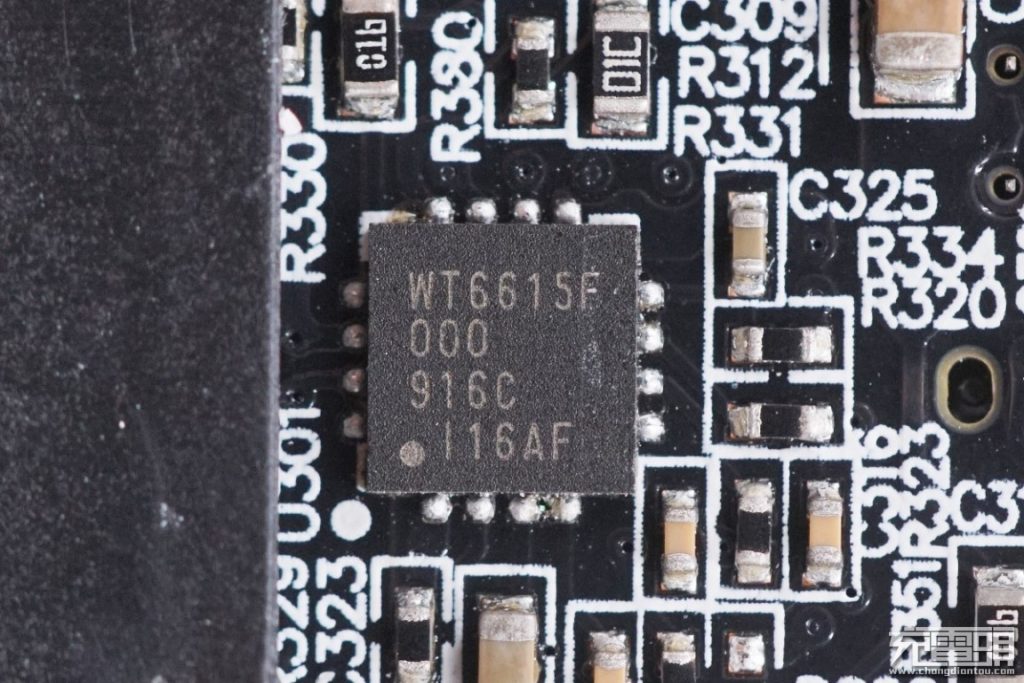
The USB-C2 uses a Weltrend WT6615F for protocol control. The WT6615F is a highly integrated USB Power Delivery (PD) controller that supports USB PD 3.0 Programmable Power Supply (PPS) specification and Qualcomm Quick Charge 4 or Quick Charge 4+ technologies designed for USB Type-C Downstream Facing Port (Source) charging applications such as power adapters, wall chargers, car chargers, power strip, power banks, and etc.The WT6615F is found in AUKEY 27W GaN charger and Anker PowerPort Atom PD 1 30W GaN Charger.
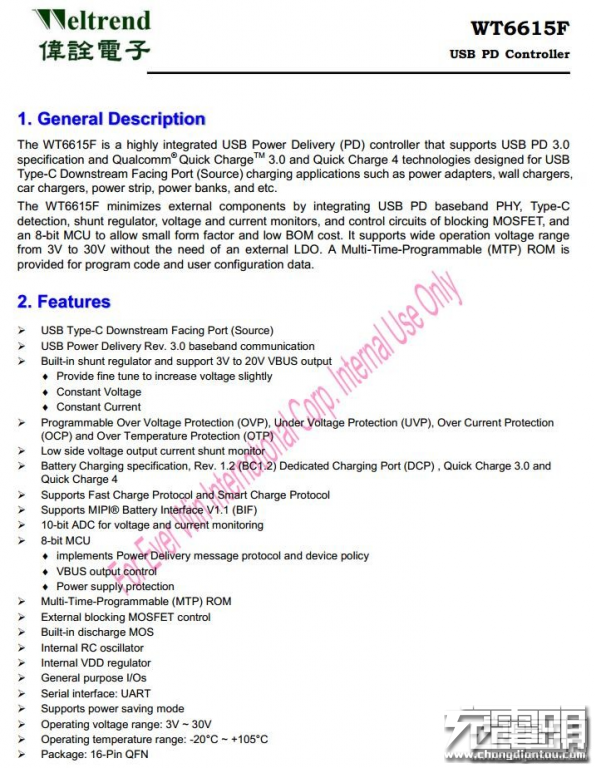
Detailed specifications of the Weltrend WT6615F.
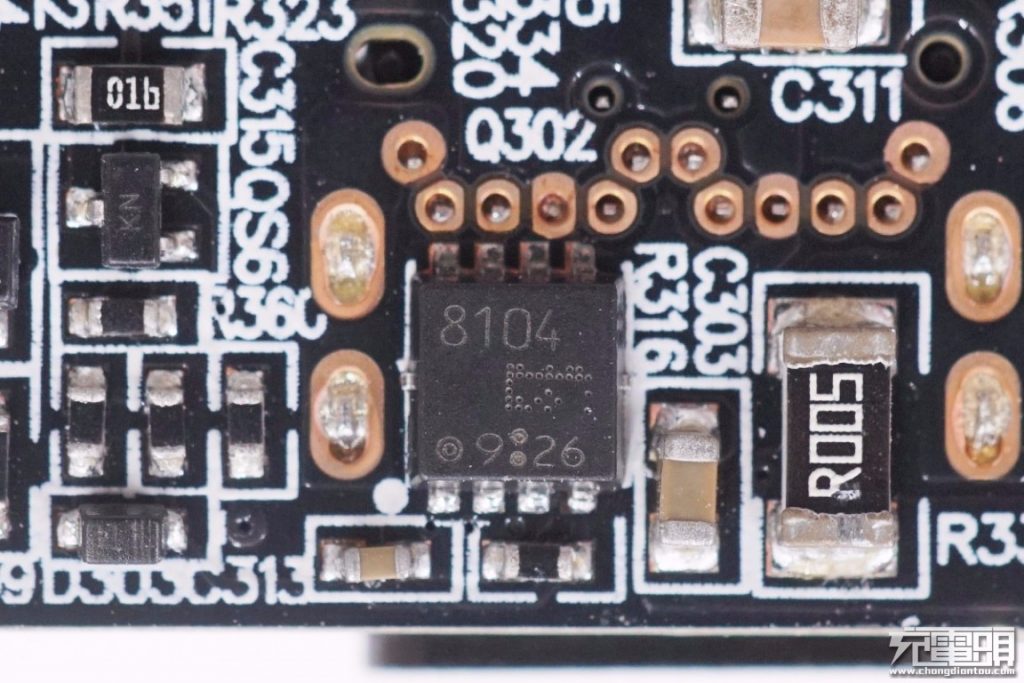
A Toshiba TPCC8104 MOSFET, as the output switch for the USB-C2 port.
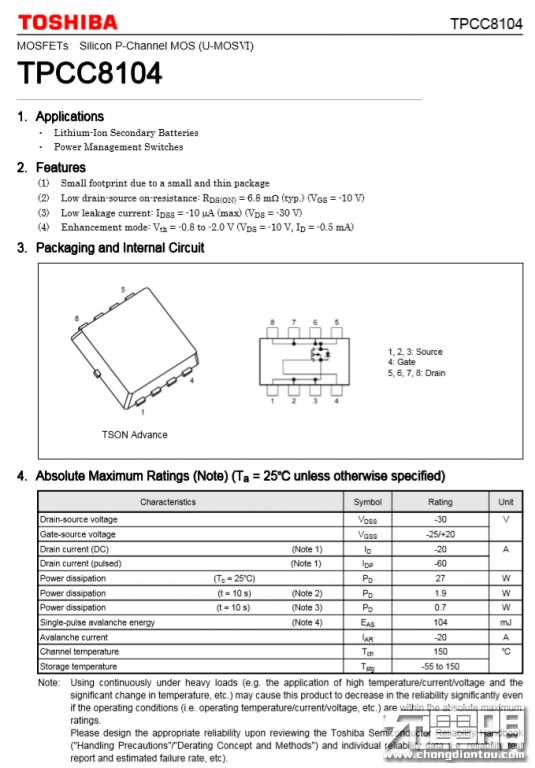
Detailed specifications of the TPCC8104 MOSFET.
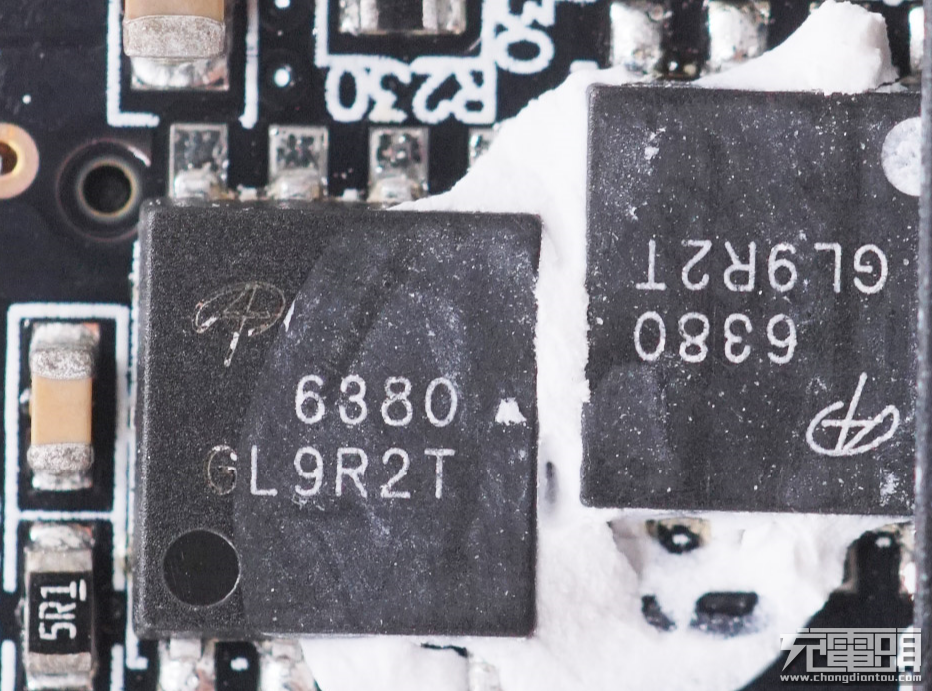
AOS AON6380 NMOS as buck MOSFET for the USB-C1 port.
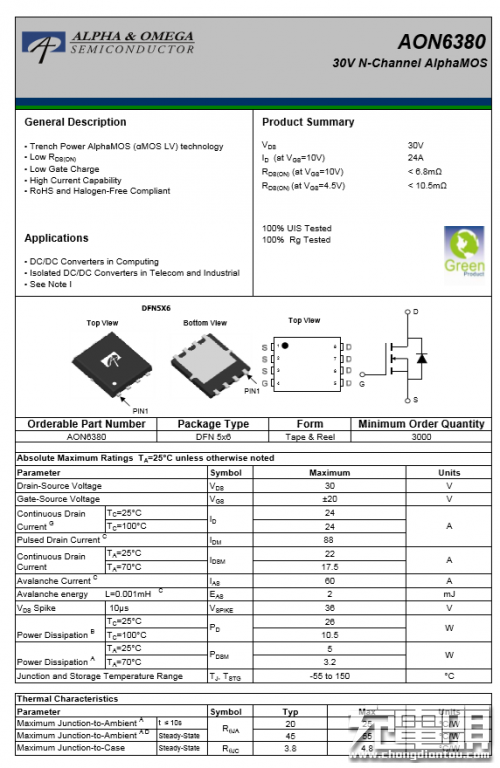
Detailed specifications of the AOS AON6380.
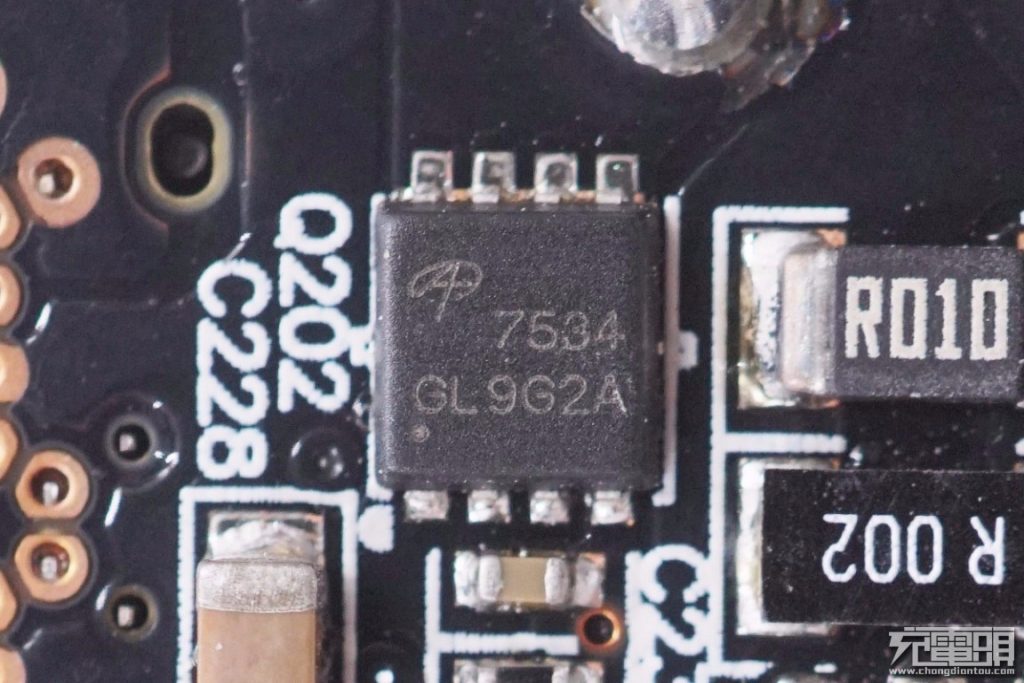
An AOS AON7534 acts as an output switch for the USB-C1 interface.
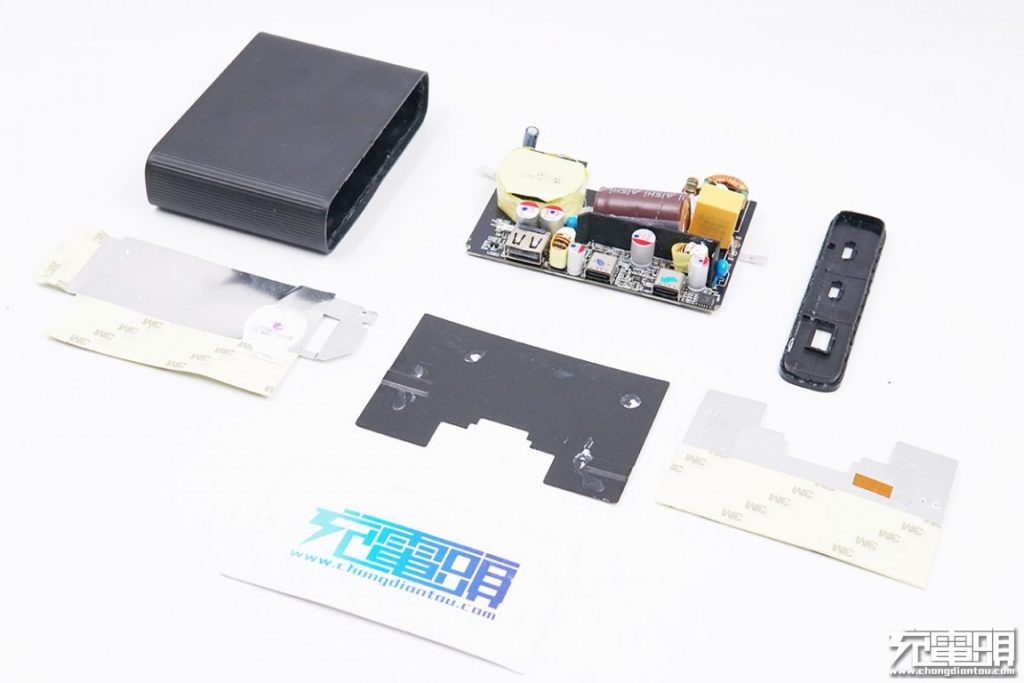
All the components.
III Conclusion
As a desktop charger, the ZMI zPower Trio 65W 2C1A Desktop Charger does not offer a lot of ports, but it is one of the smallest. It is a unique desktop charger designed with mobility in mind, which might fit the need for those who are always on-the-go, but still want their desktops to be clean and tidy.
For power output, 65W max single port output, or USB-C1 45W max while USB-A & USB-C2 split 18W on top of PD and QC charging protocol support seems pretty decent for average users with lightweight laptops, PD-capable smartphones or tablets, and few legacy devices that charge over USB-A port.
On the inside, as usual for ZMI, the charger is carefully designed with neat layout and multiple heat dissipation methods on top of high quality components. It is also reasonably priced at $36 in the US. However, it lacks PPS support which would otherwise make it even better.
Pros:
Slim and compact with decent spec.
High quality components and neat design.
Reasonbablly priced (power cord and charging cable included).
Cons:
No PPS support.
Source: chongdiantou


